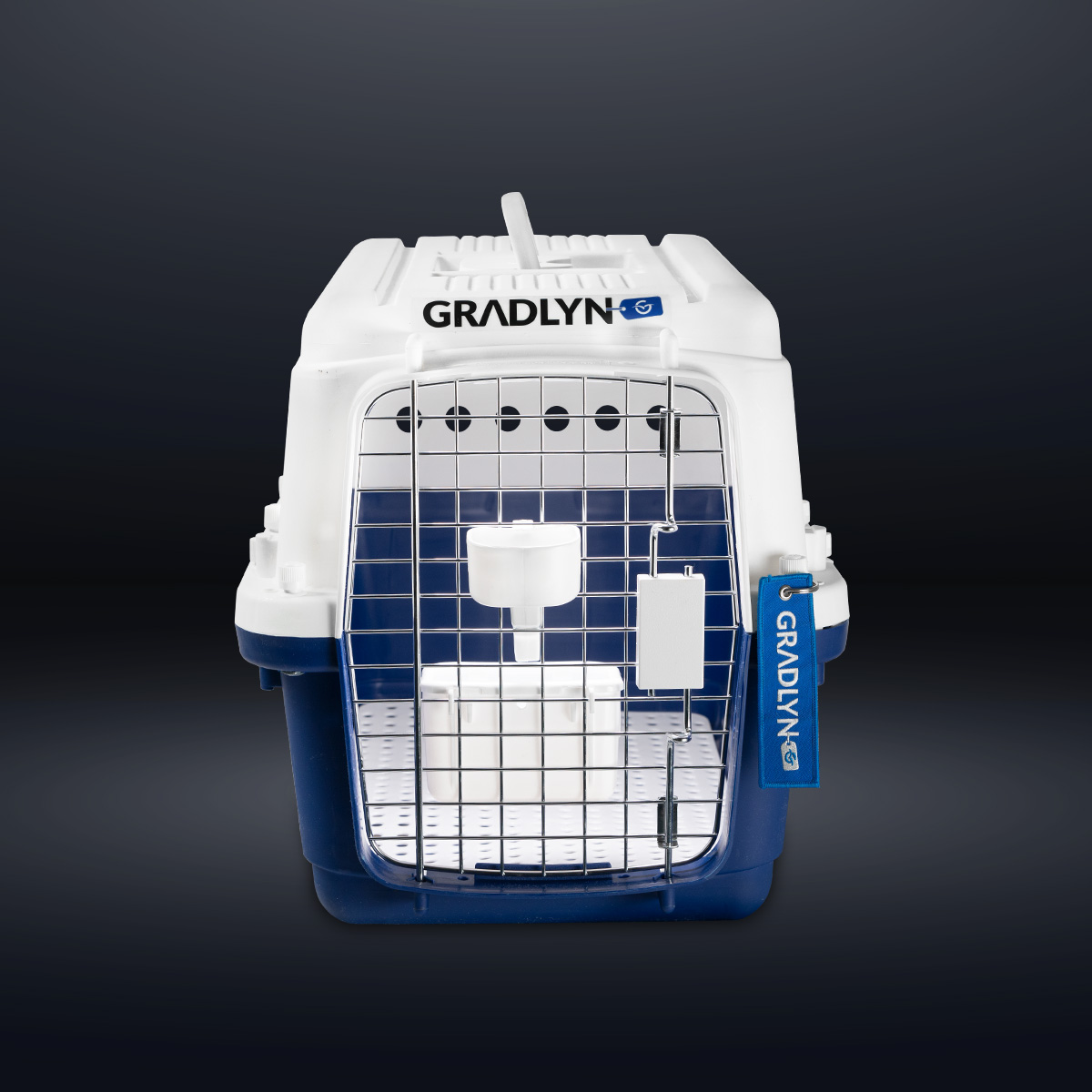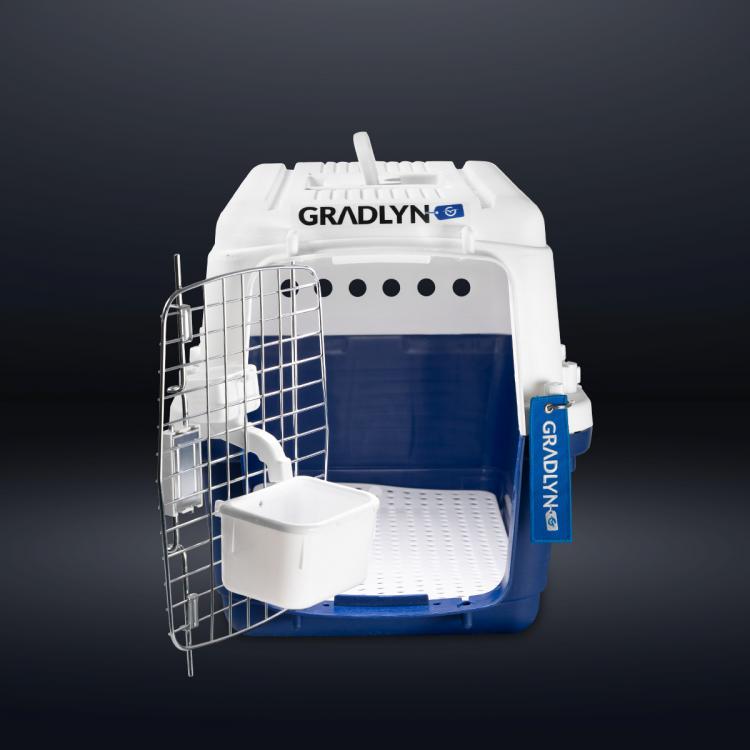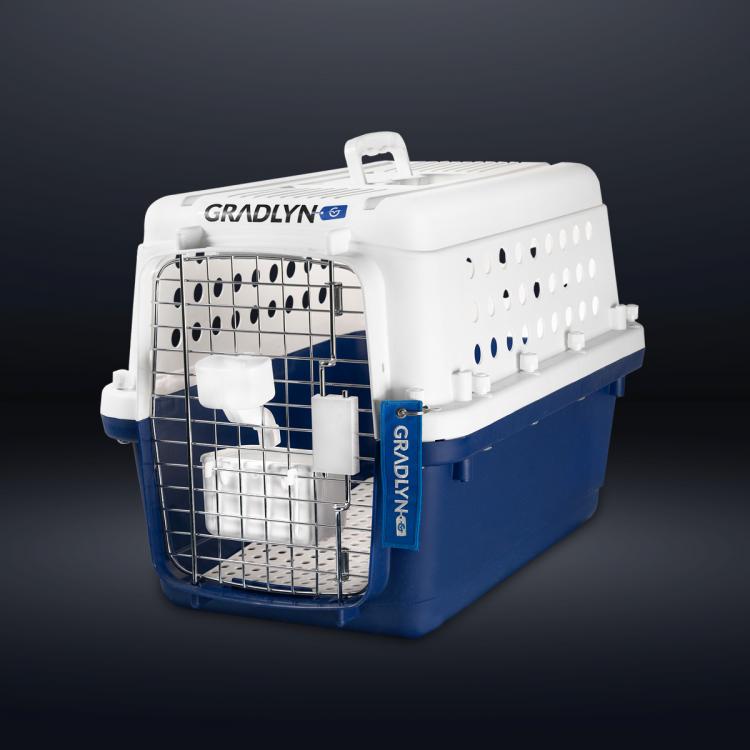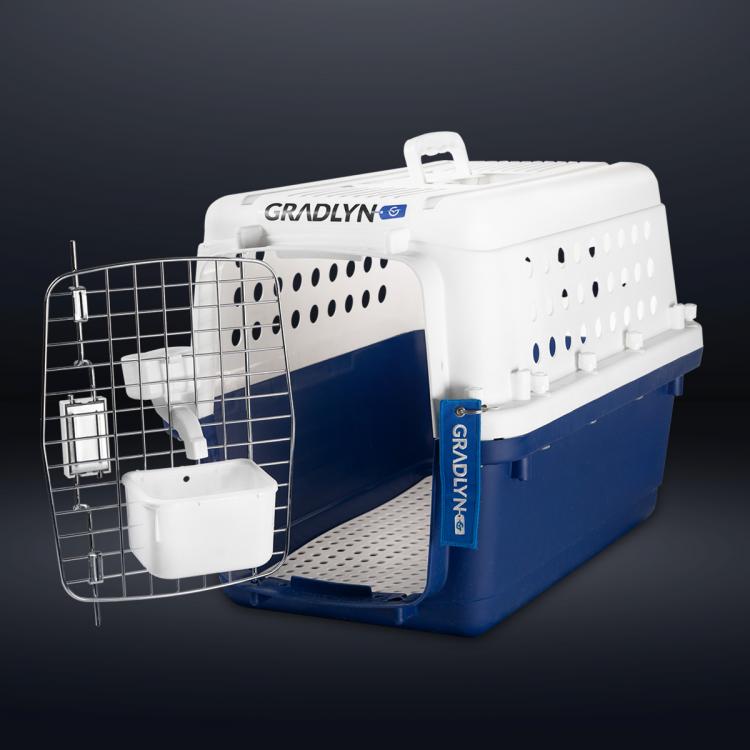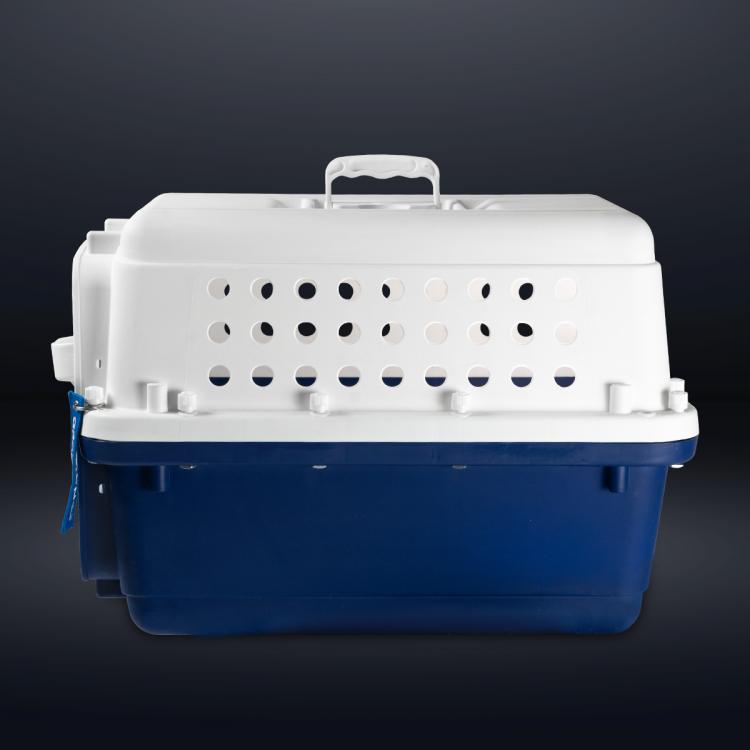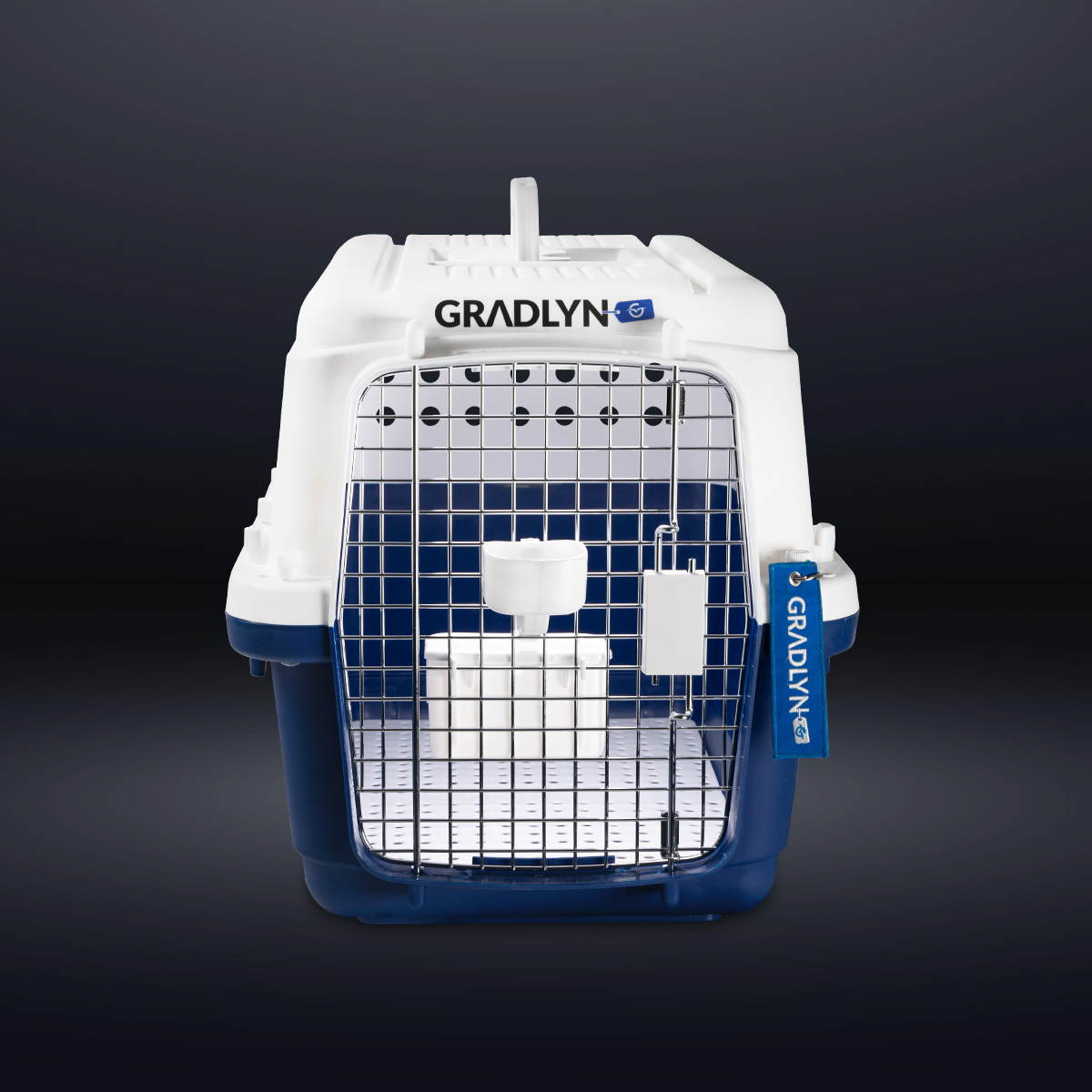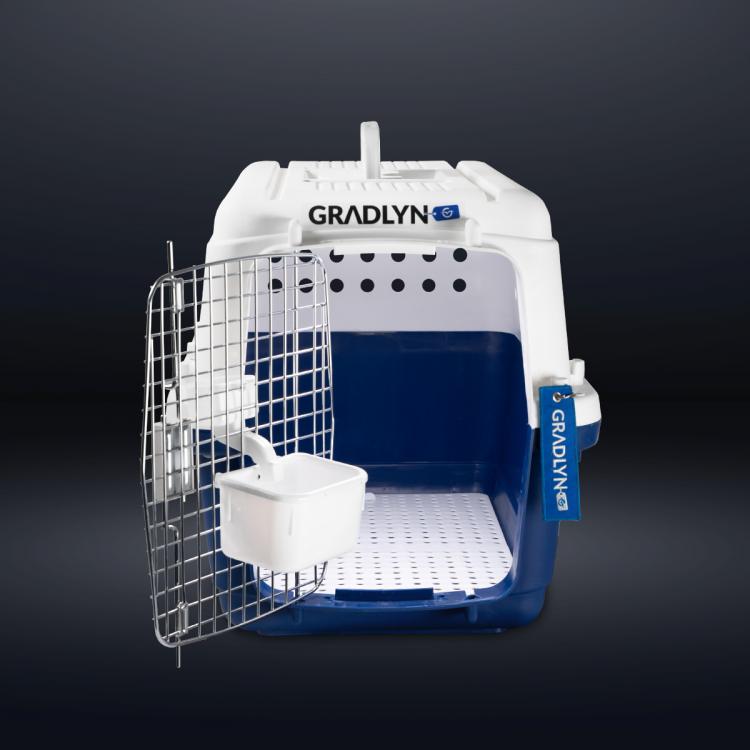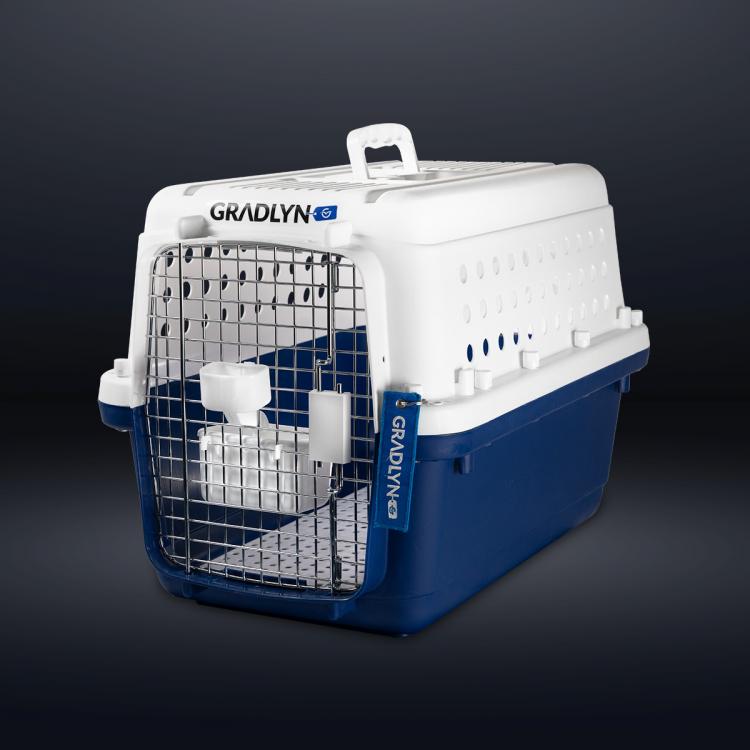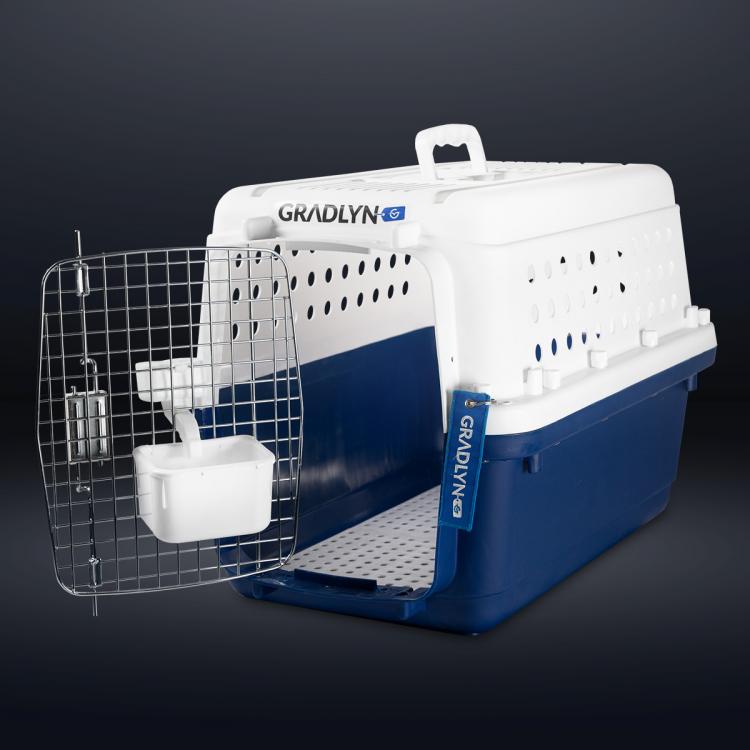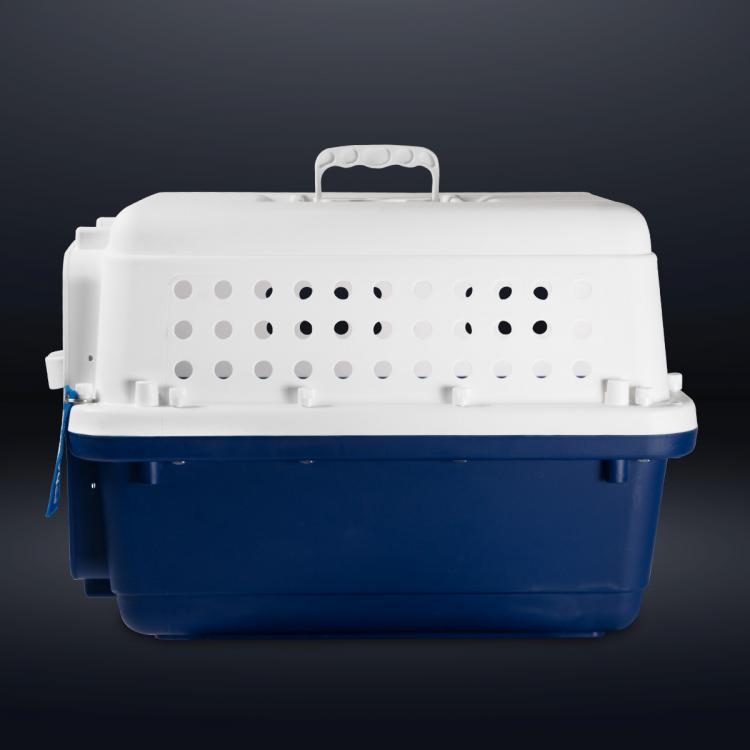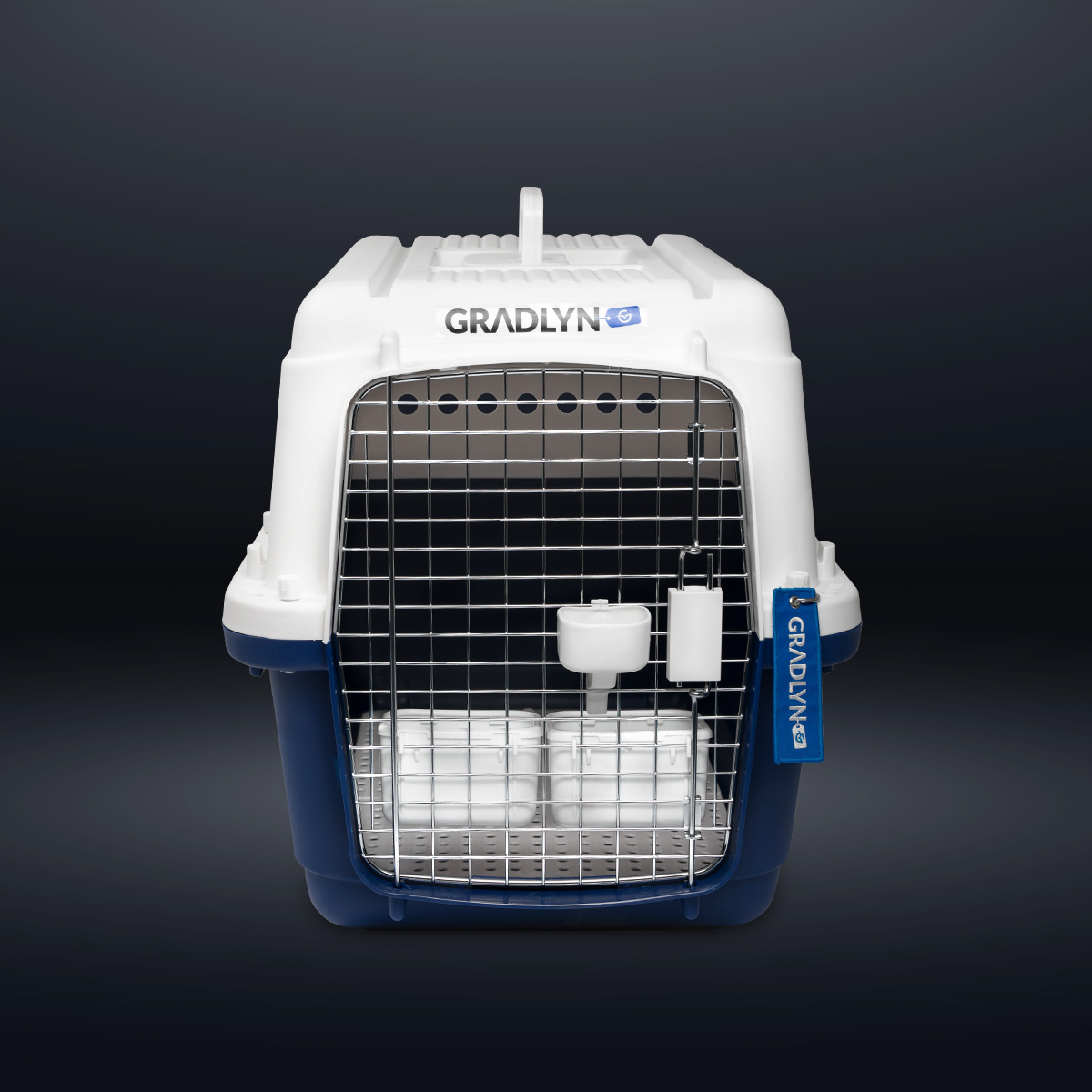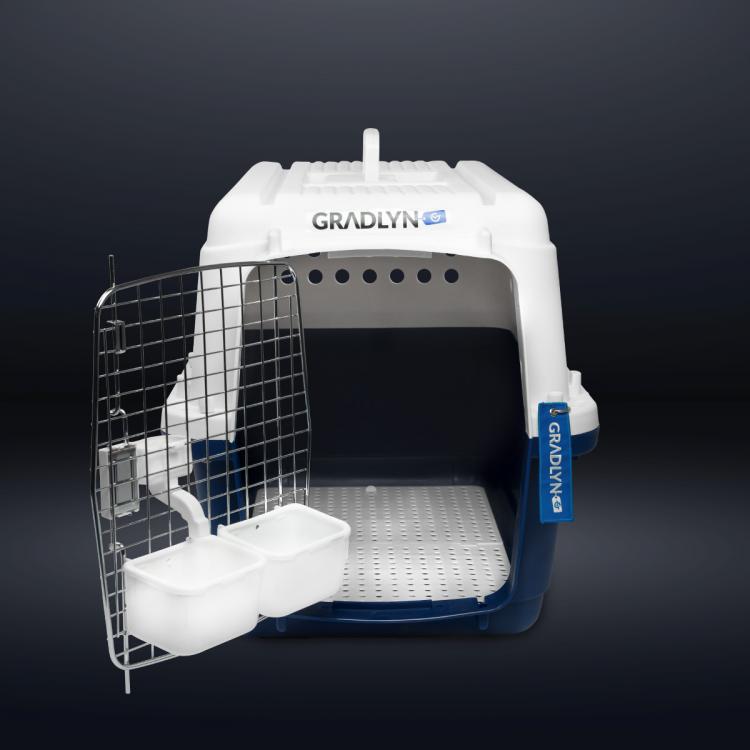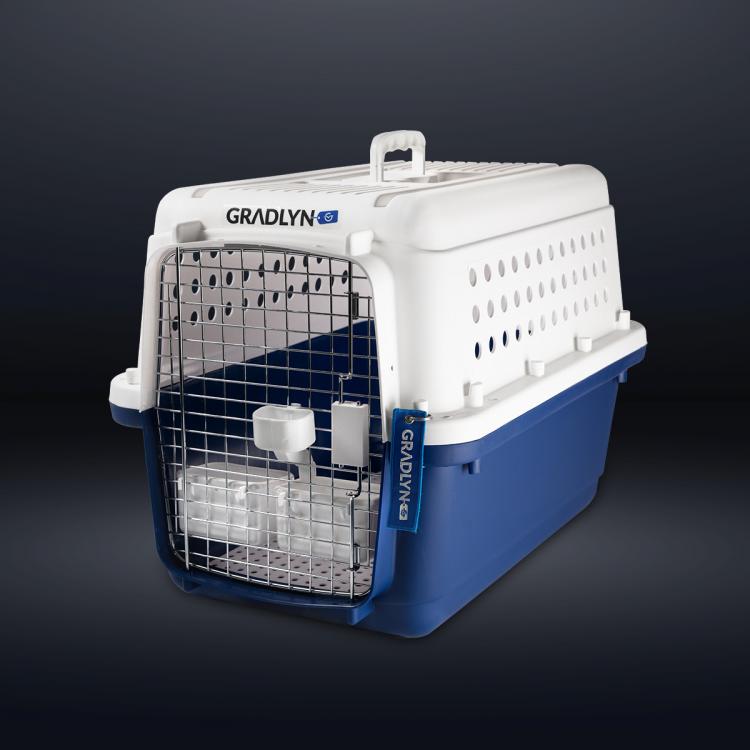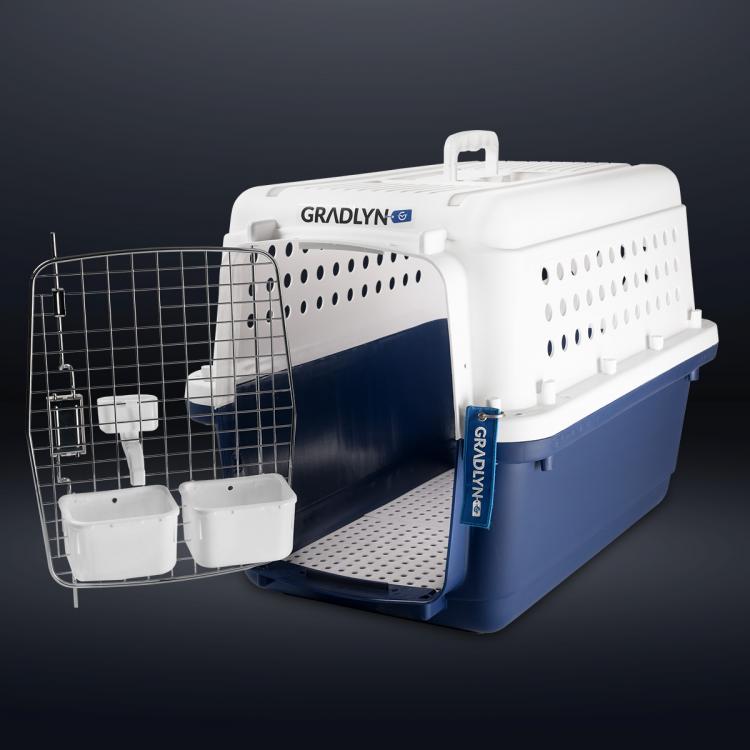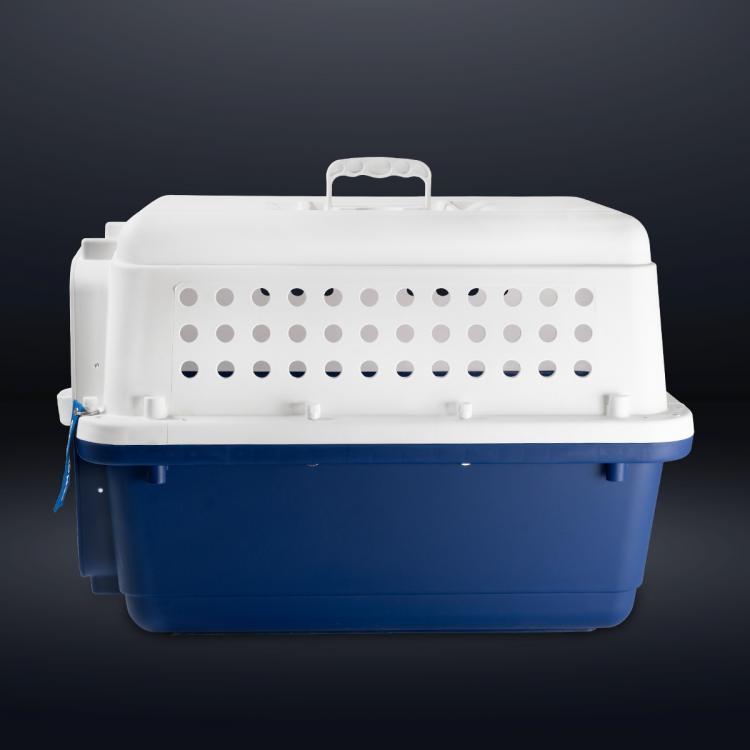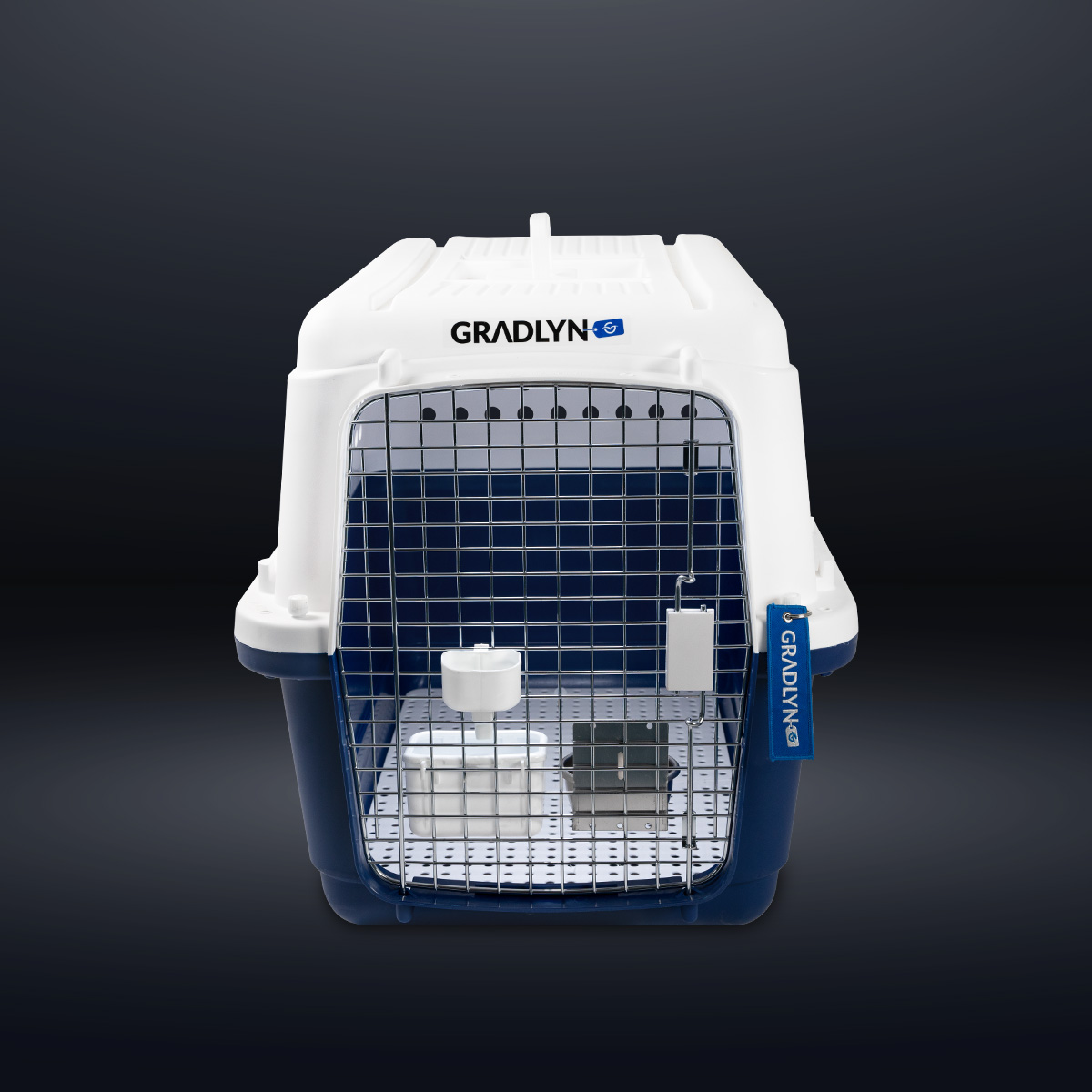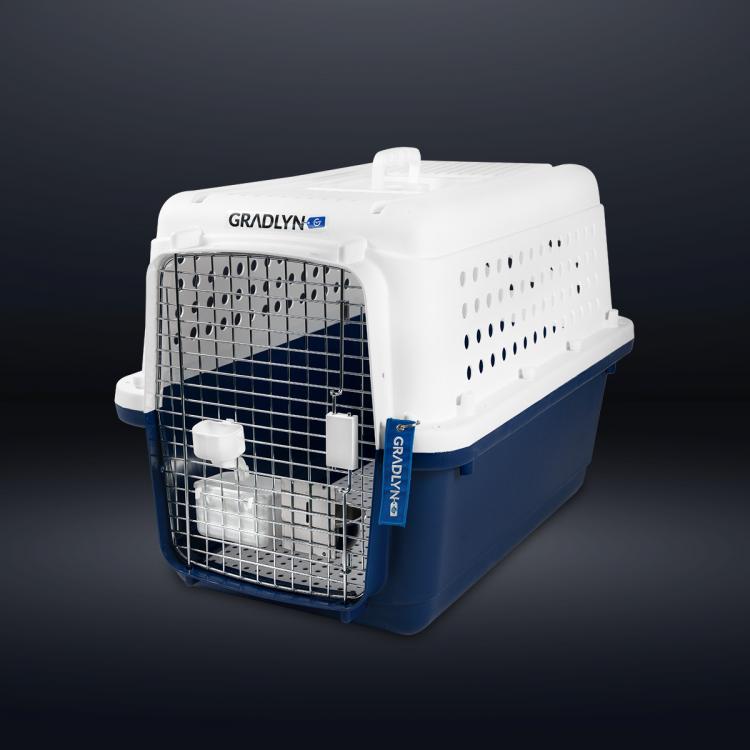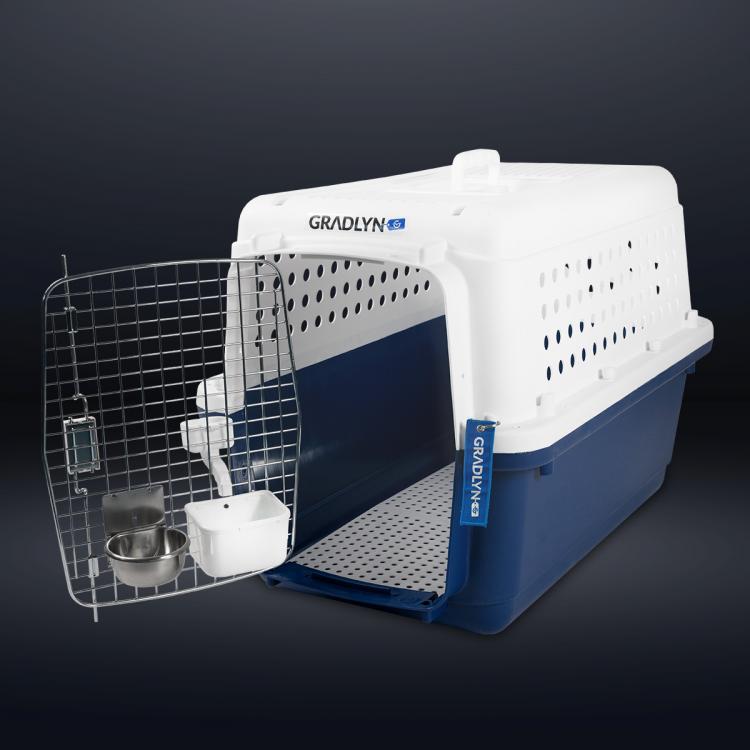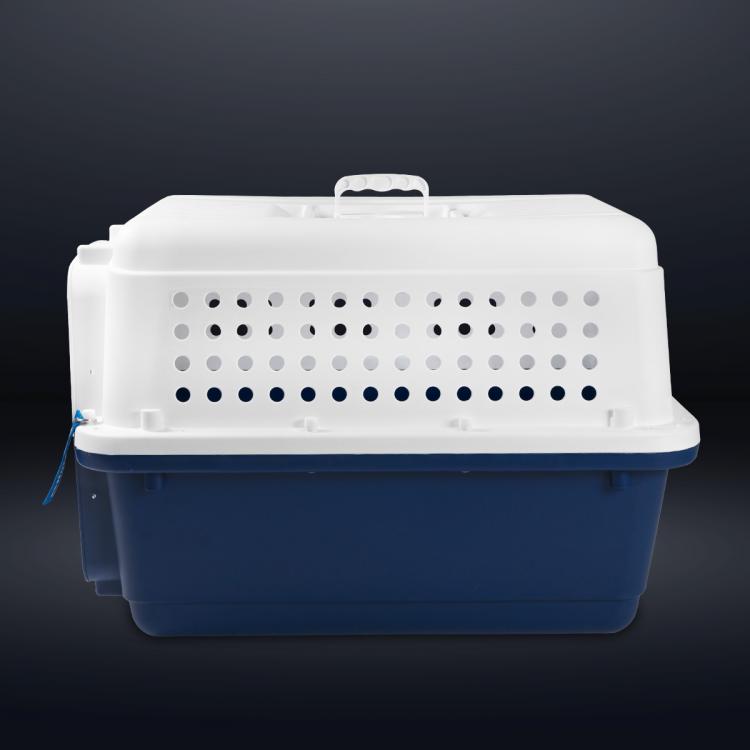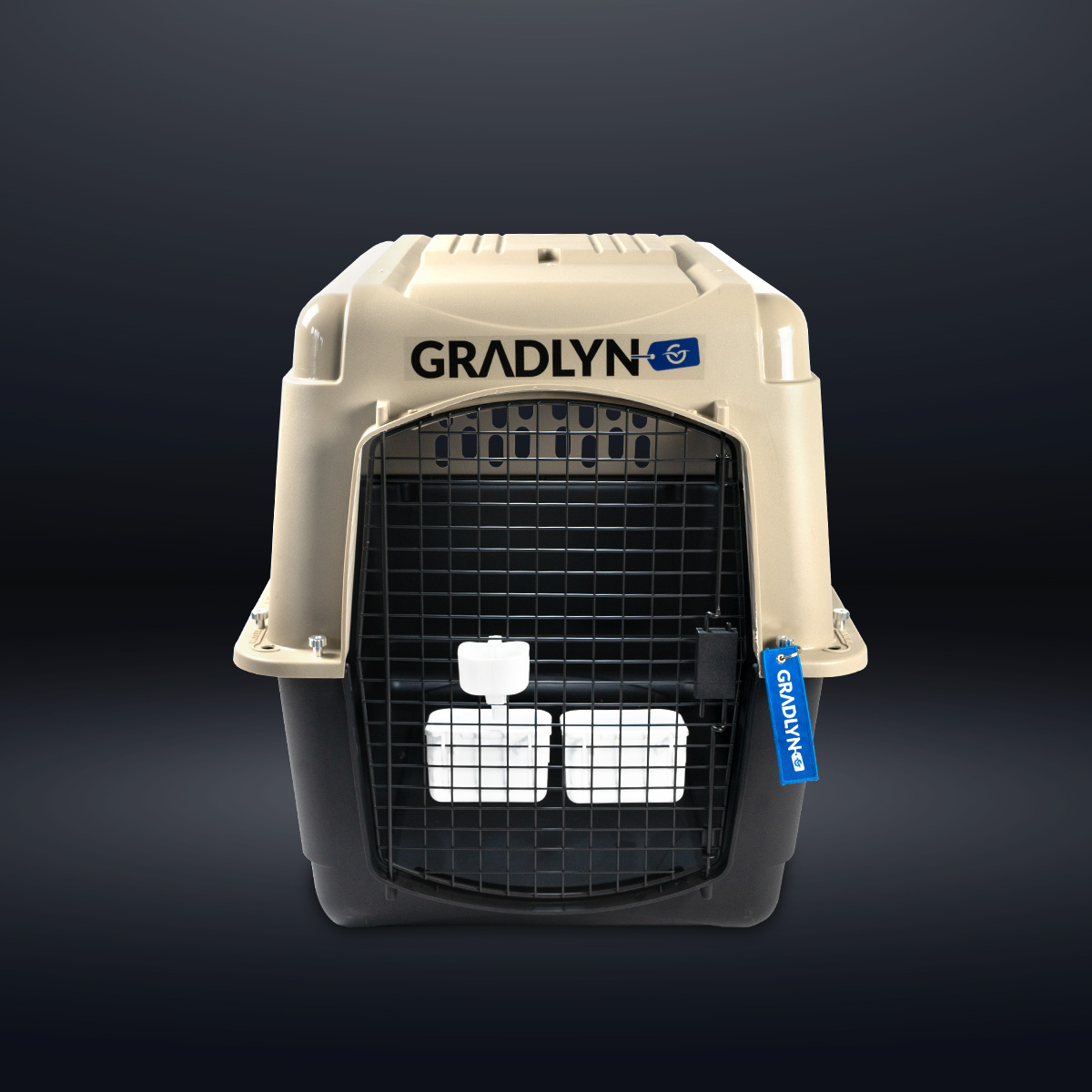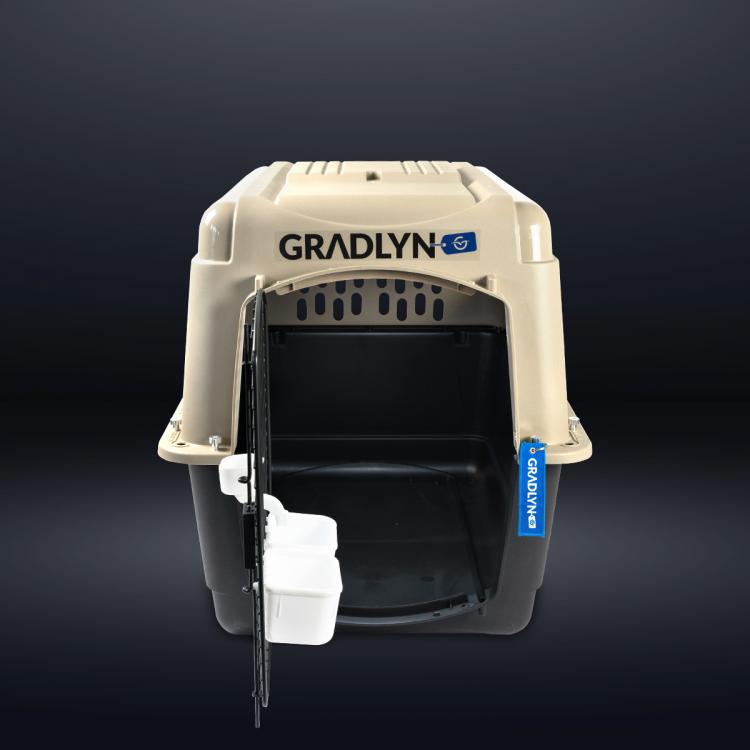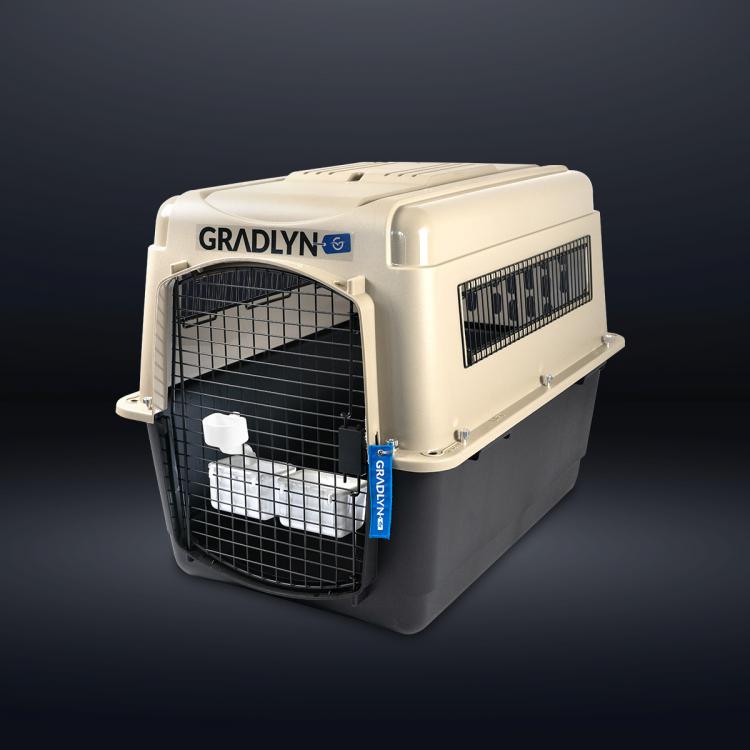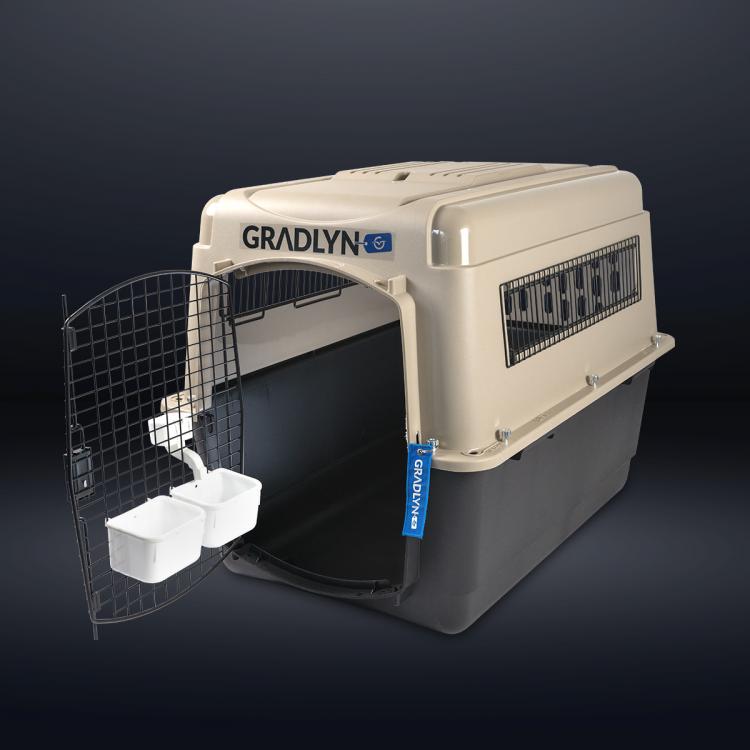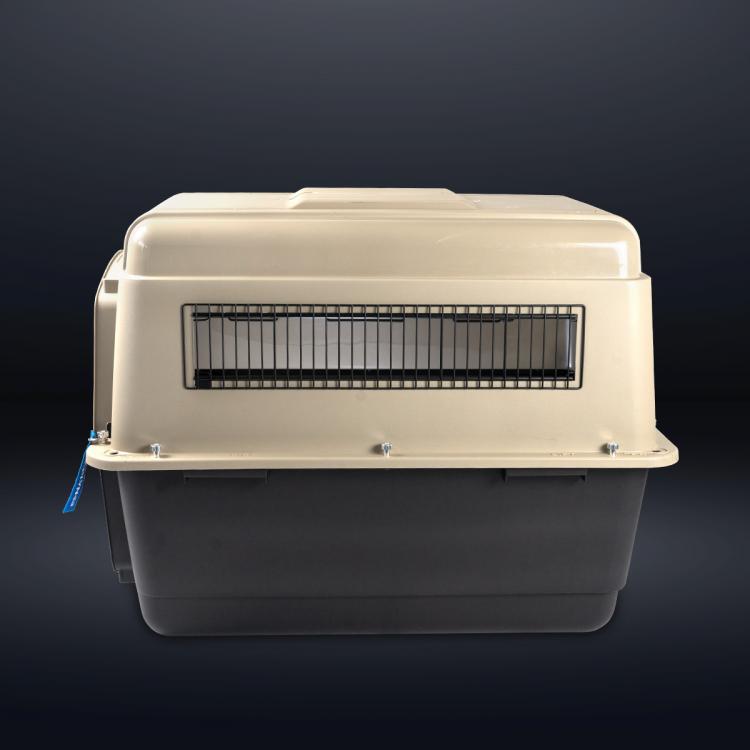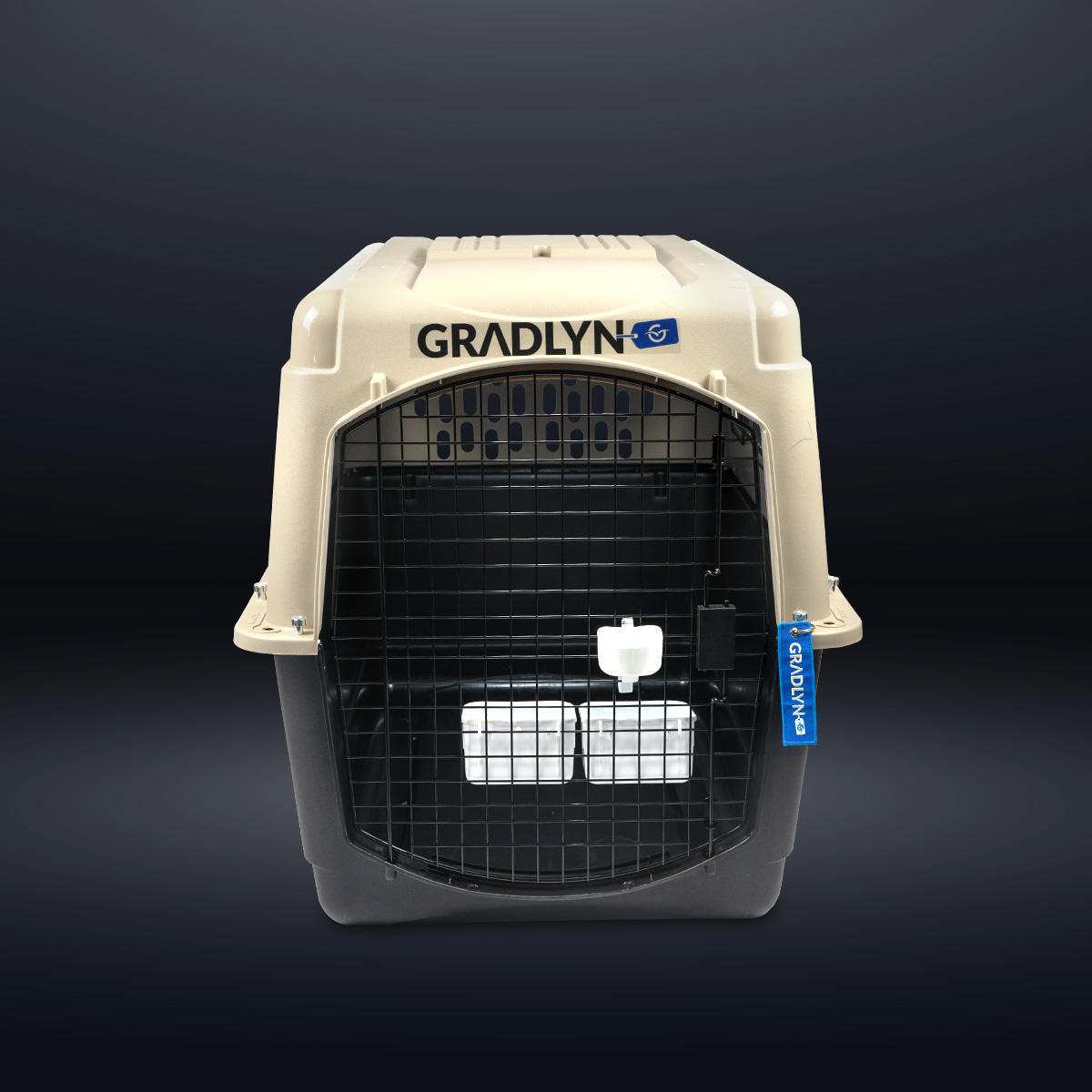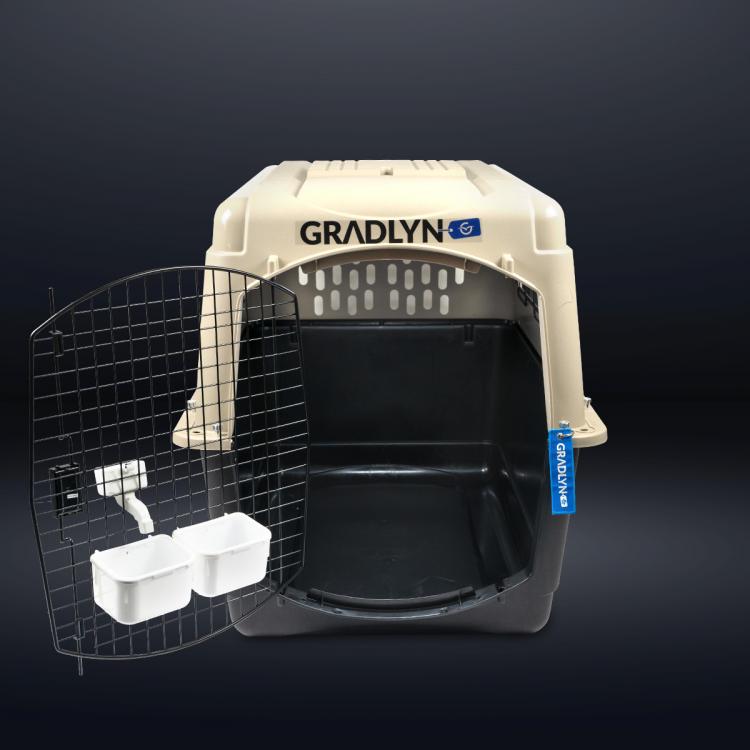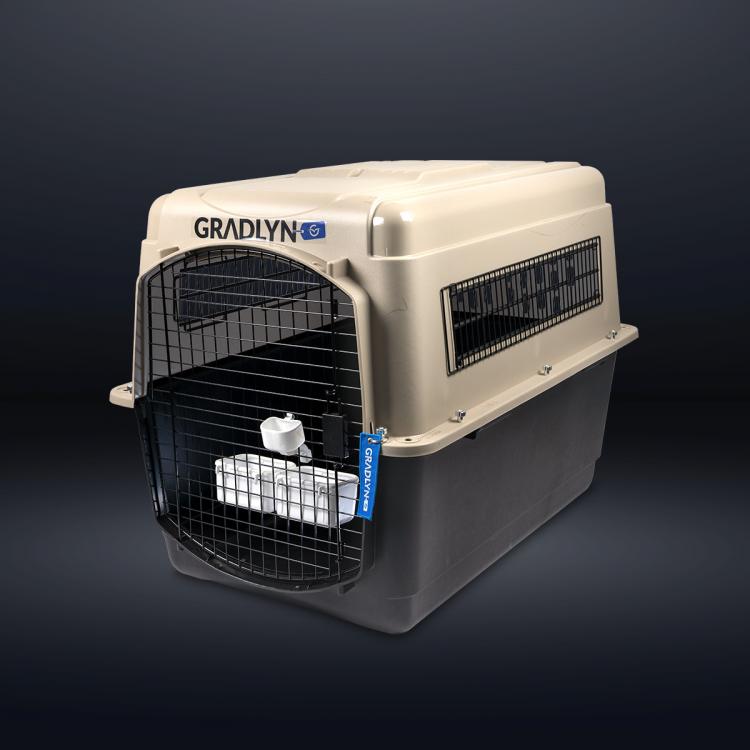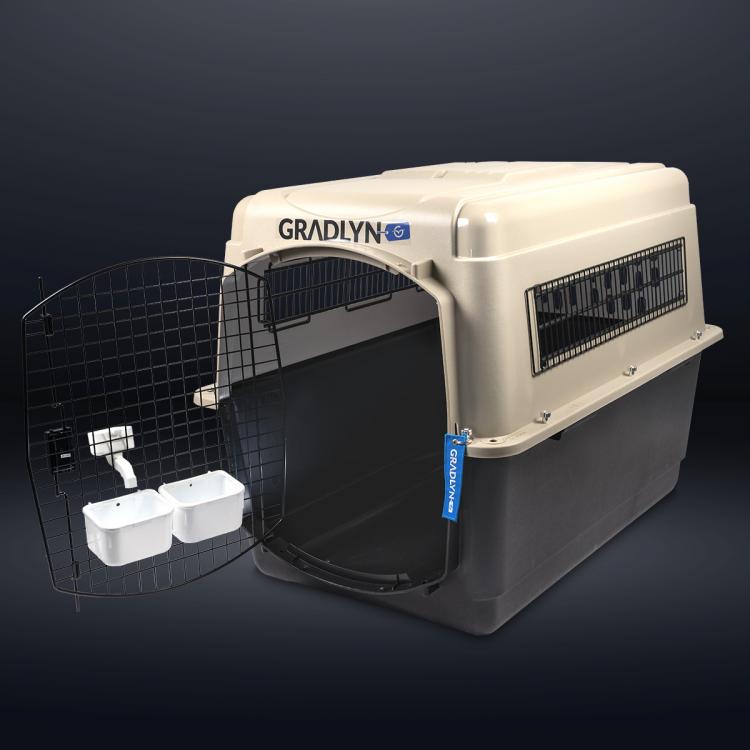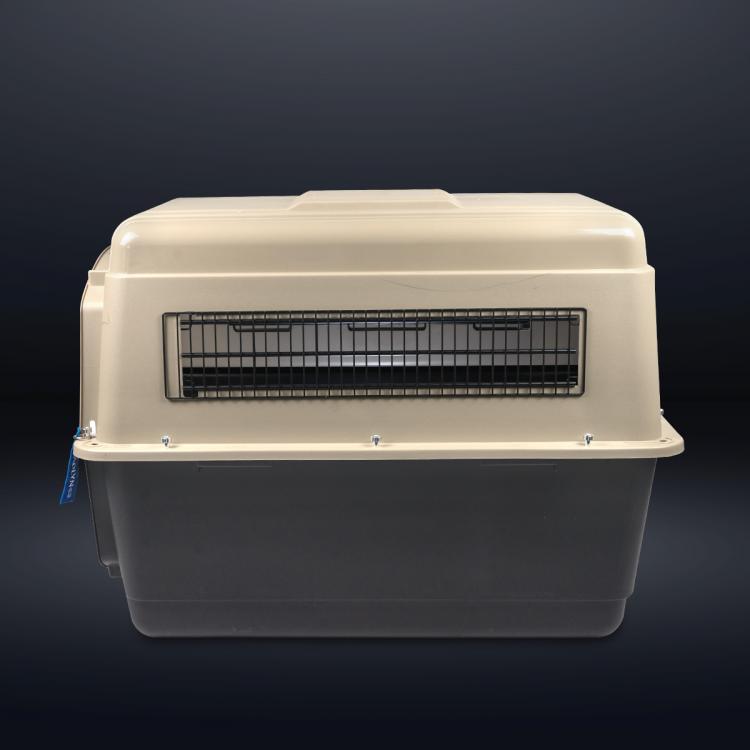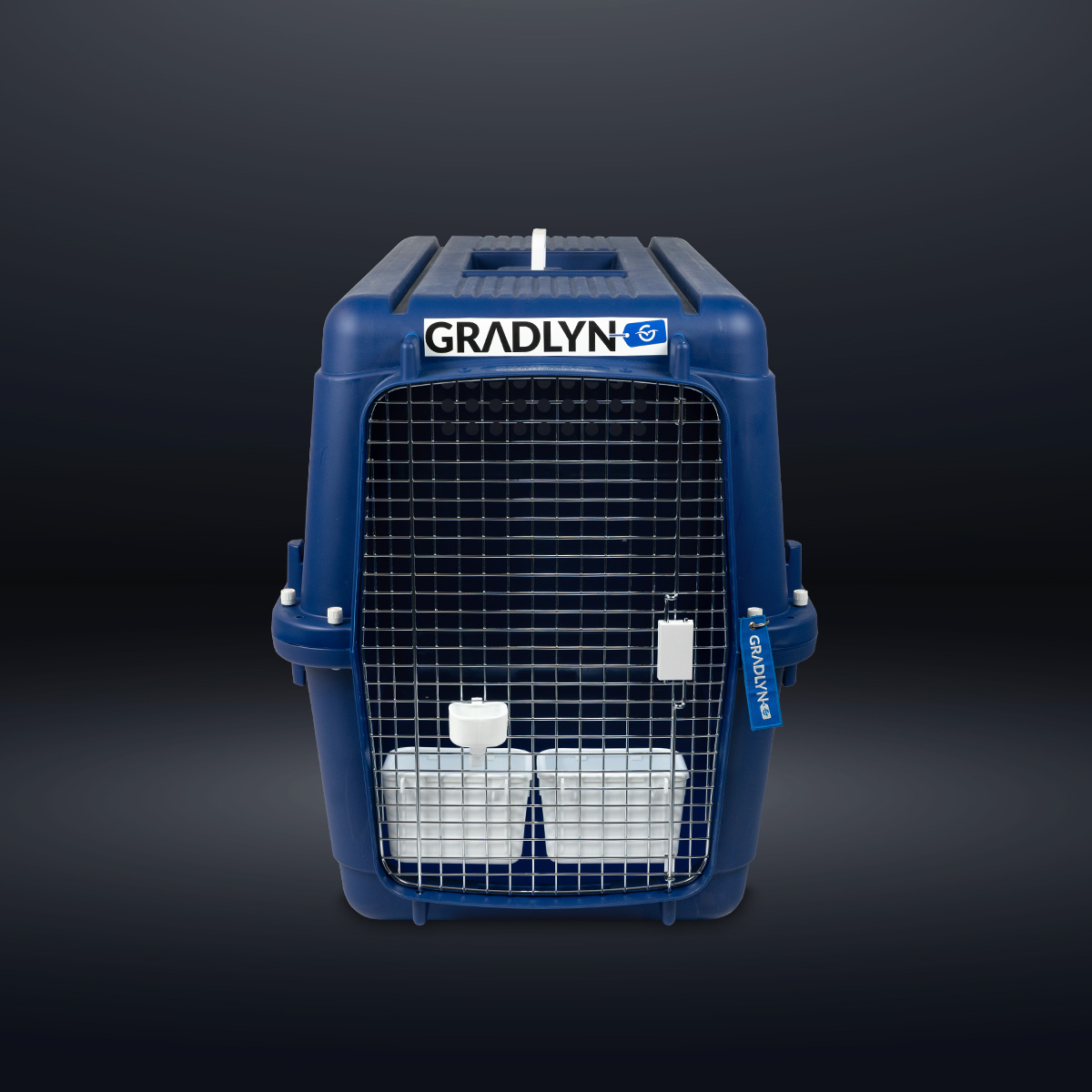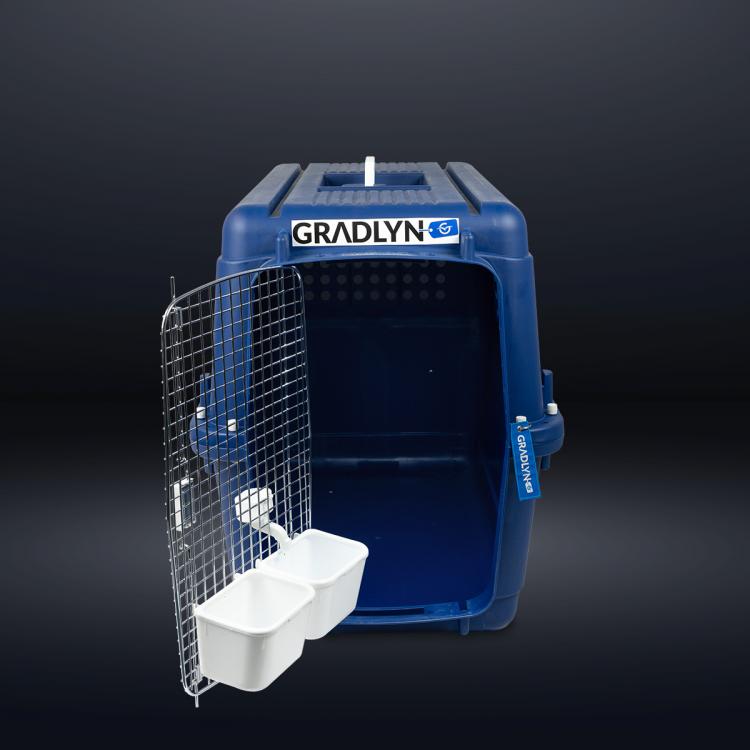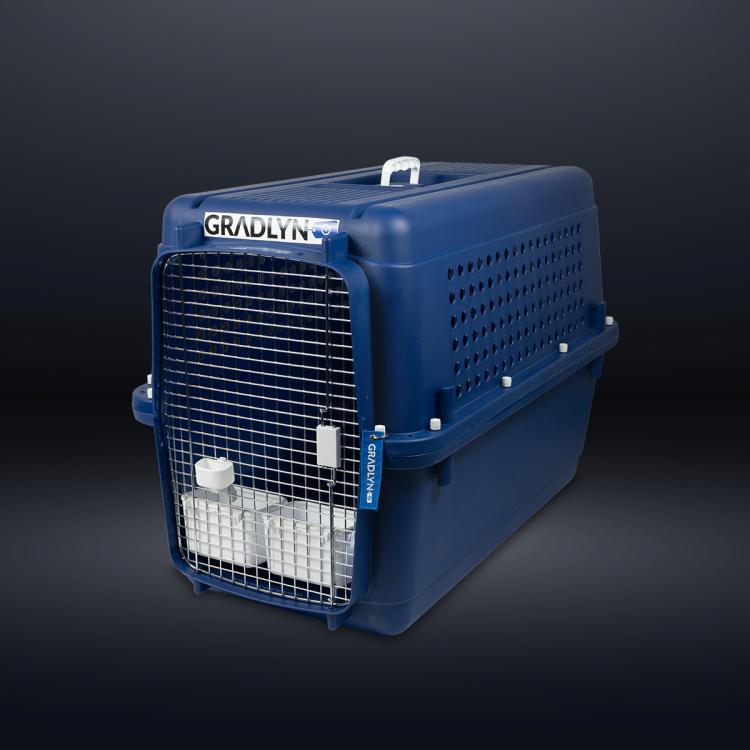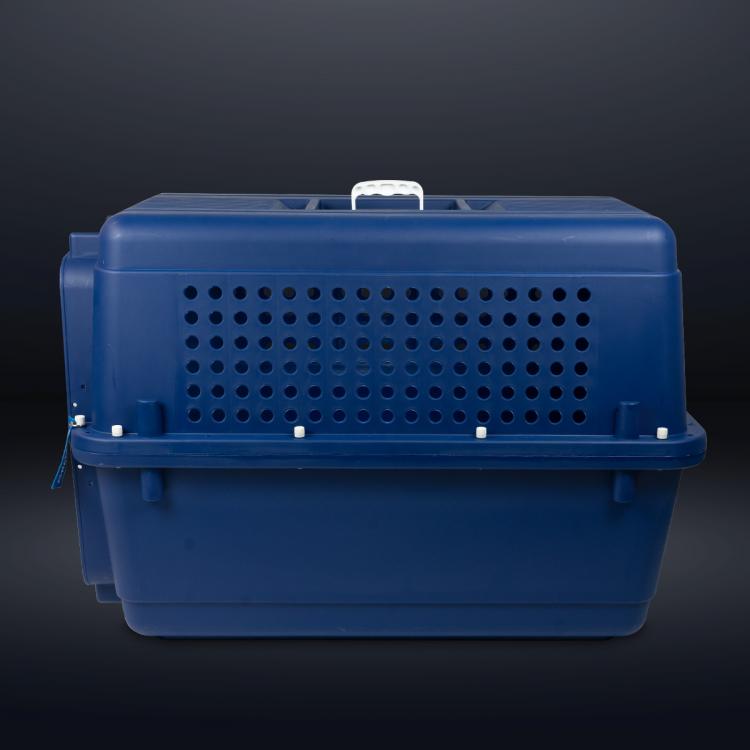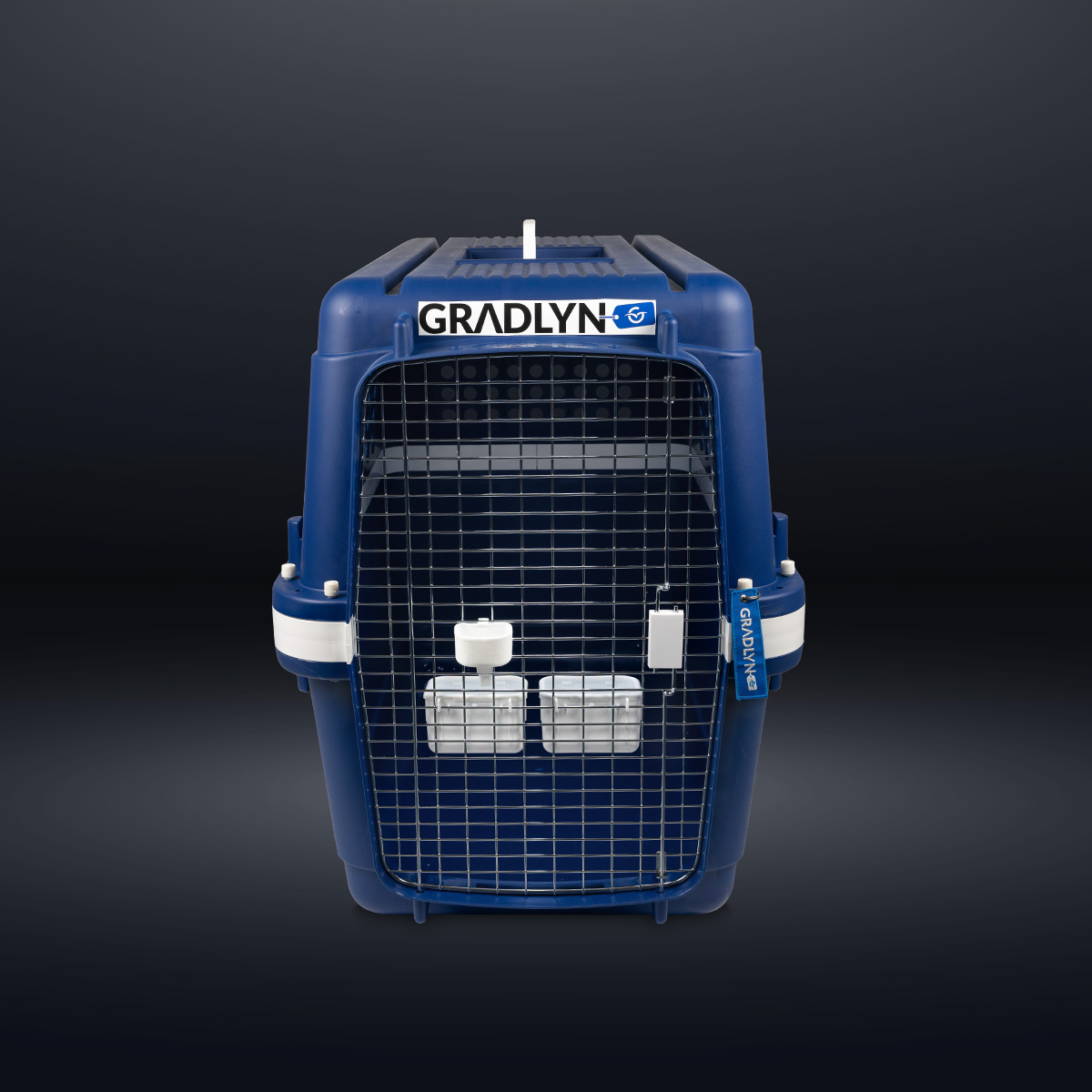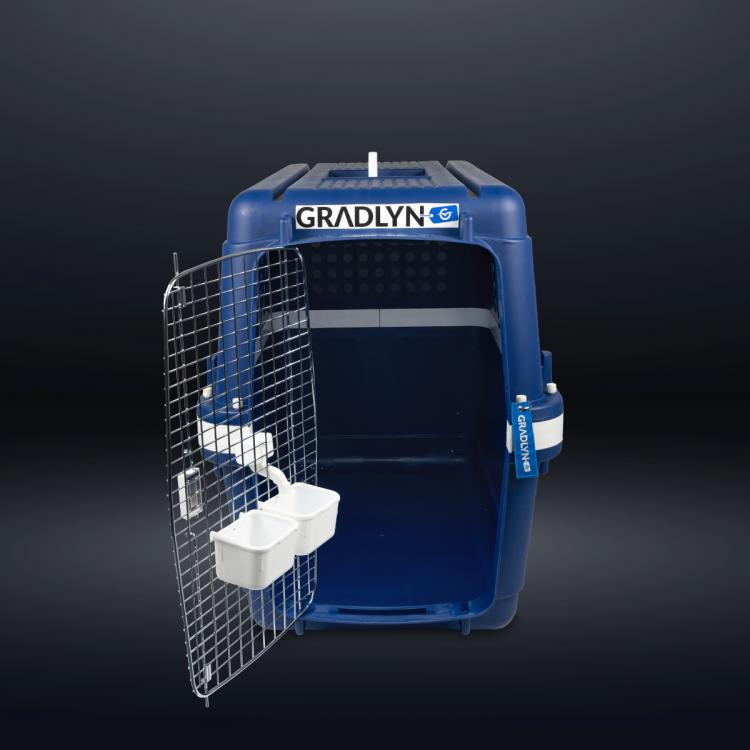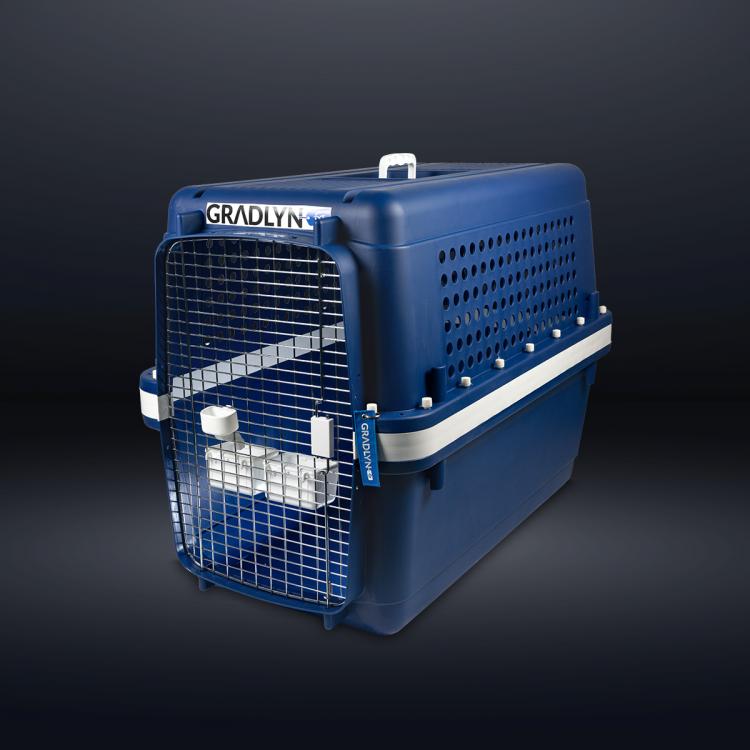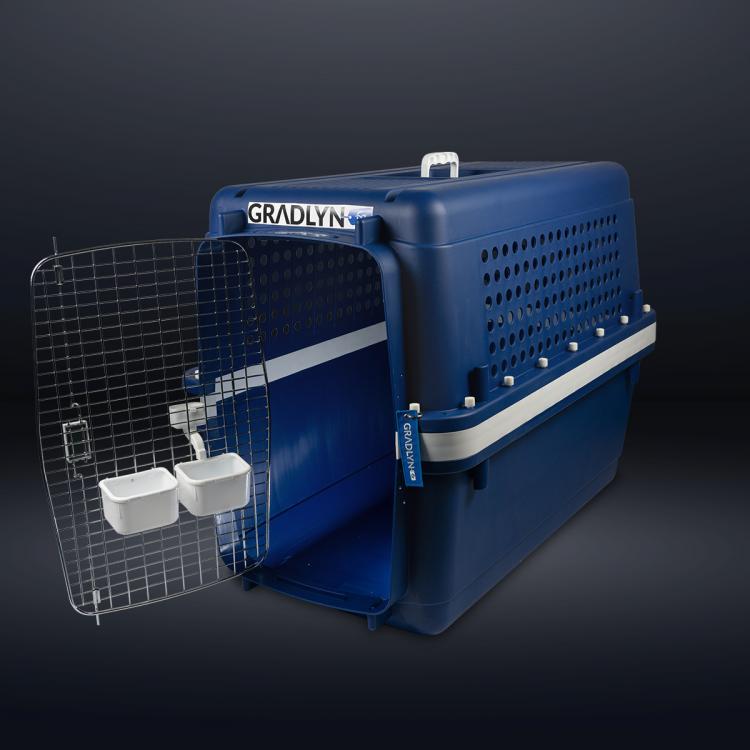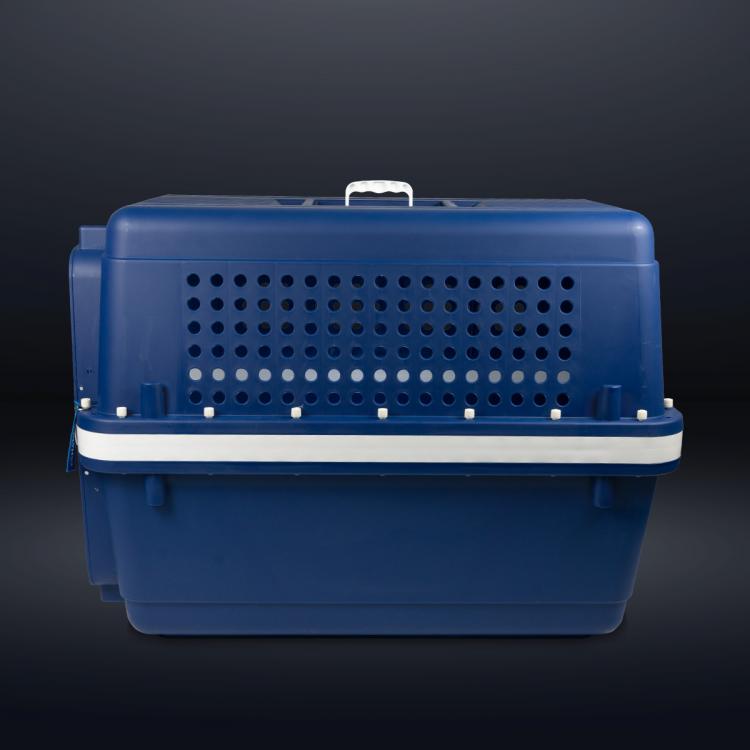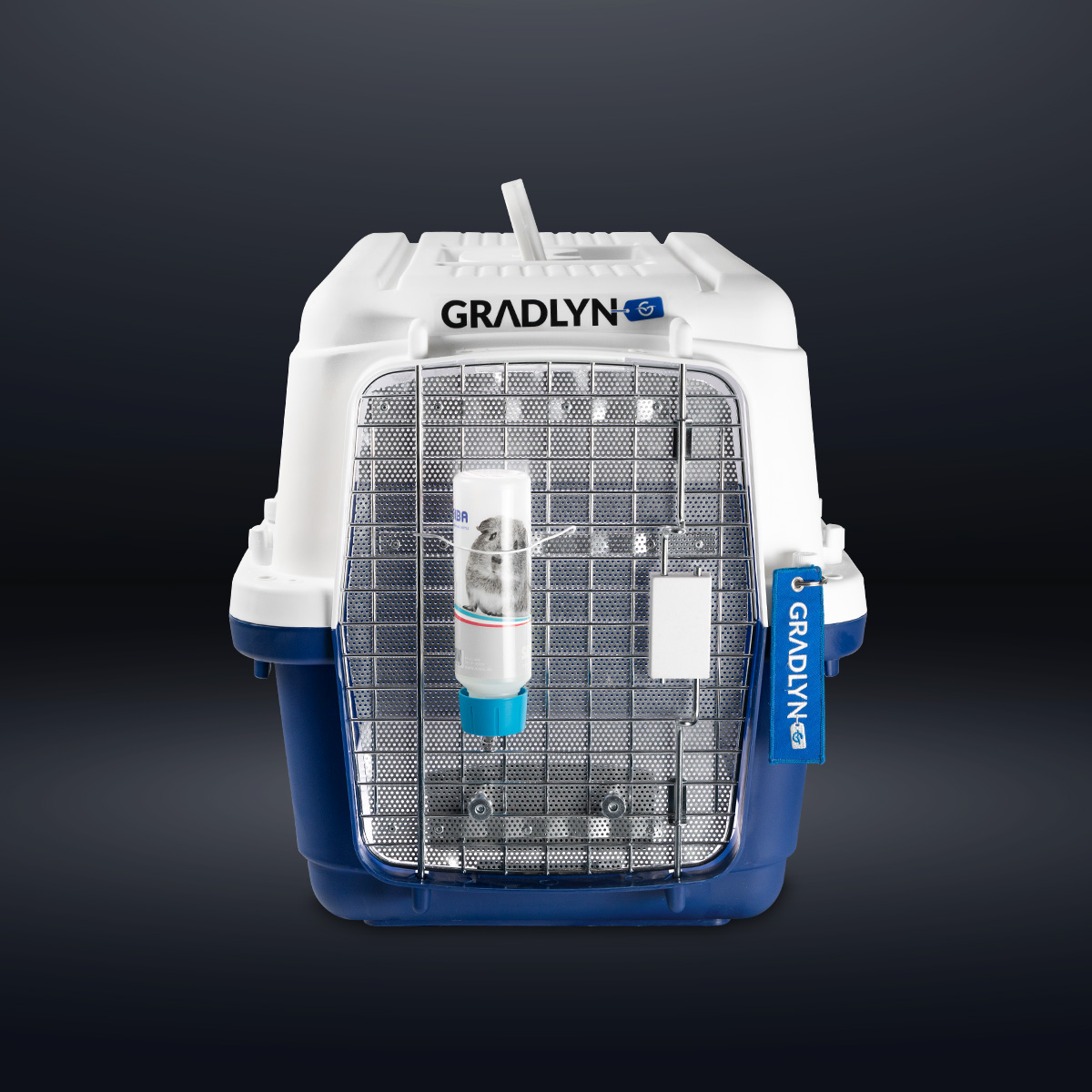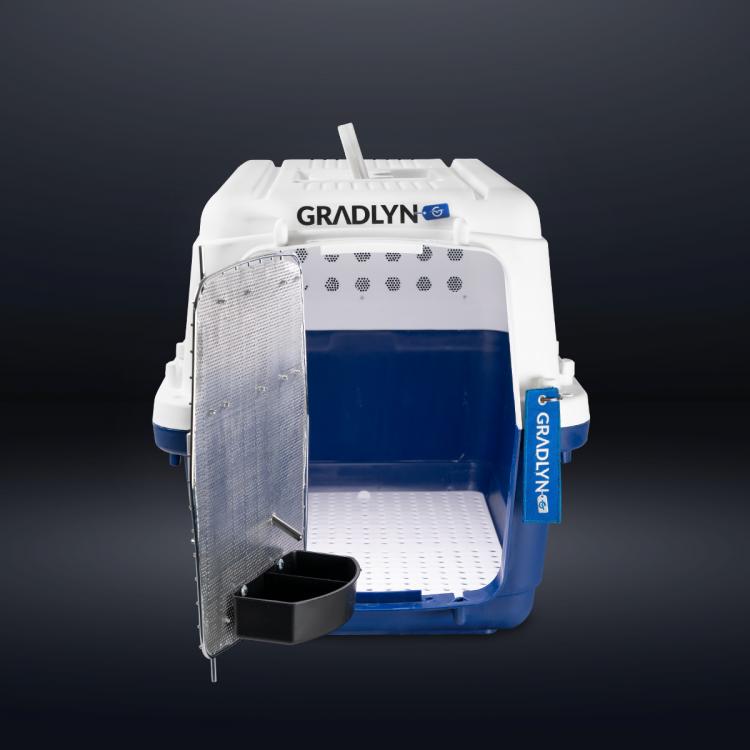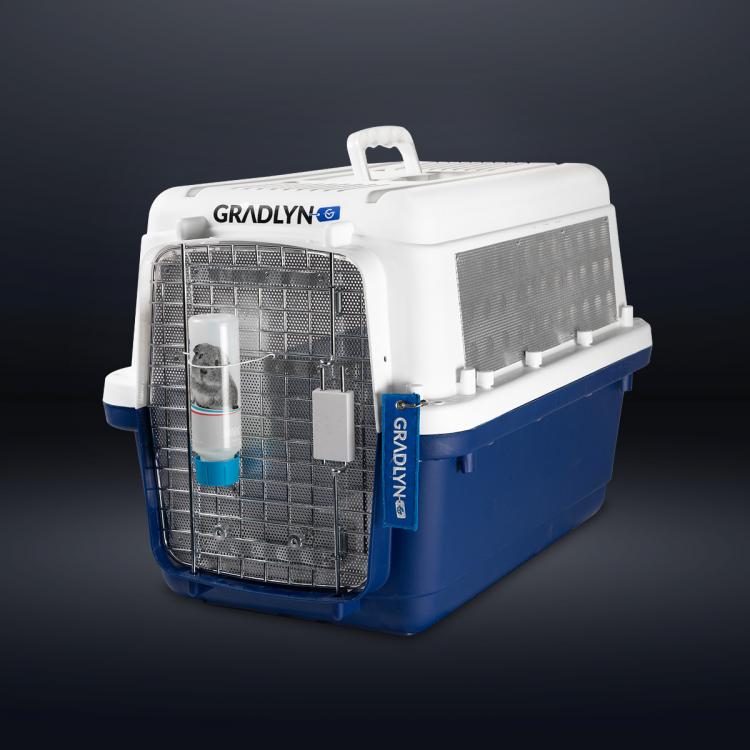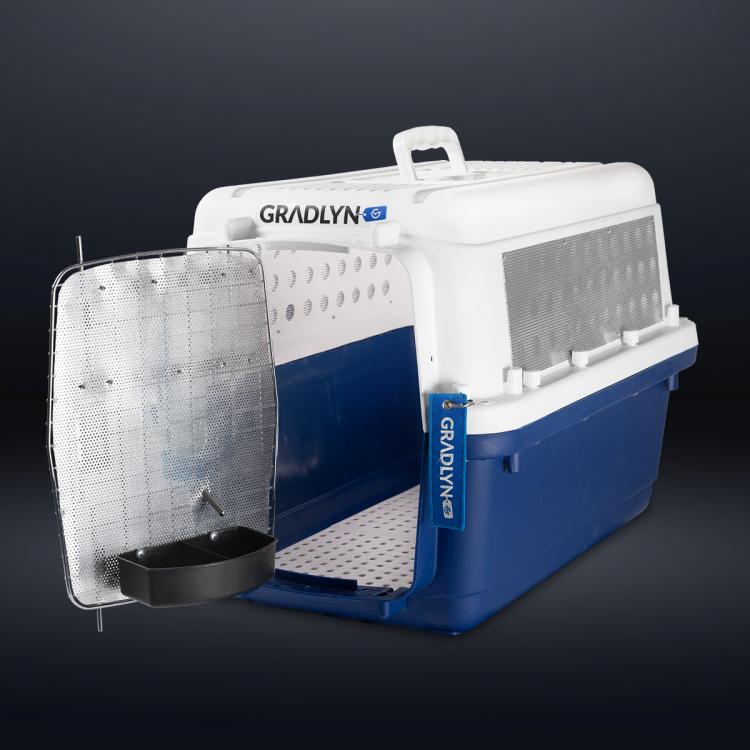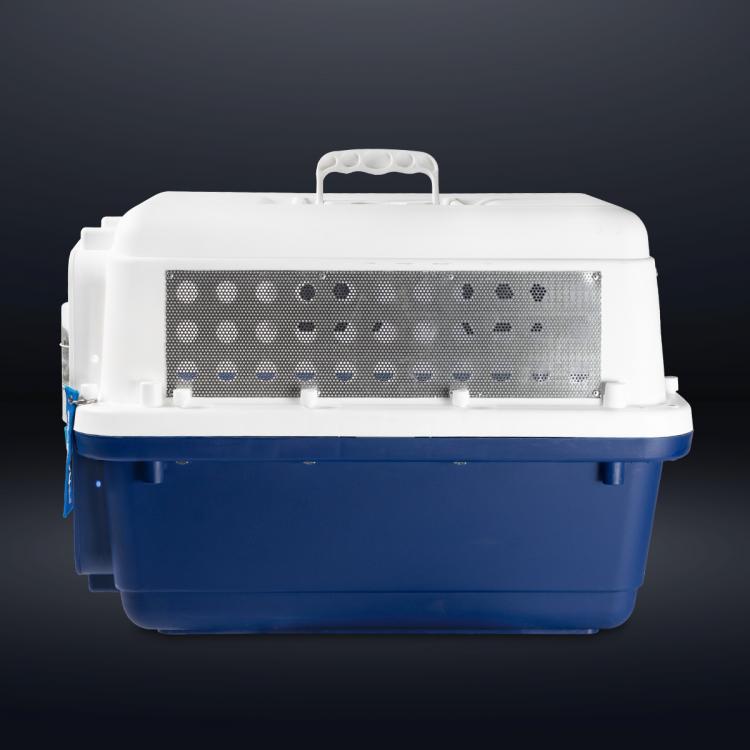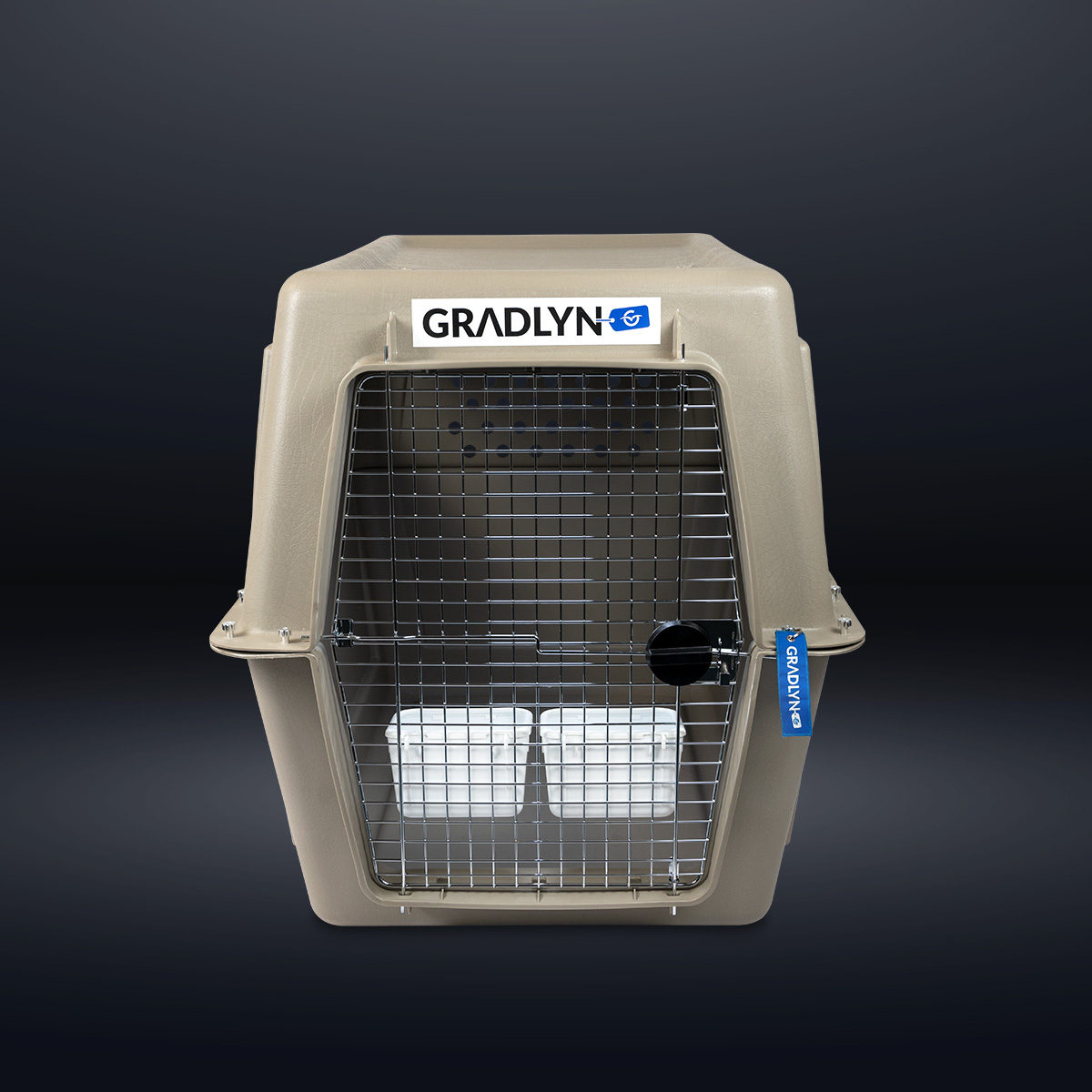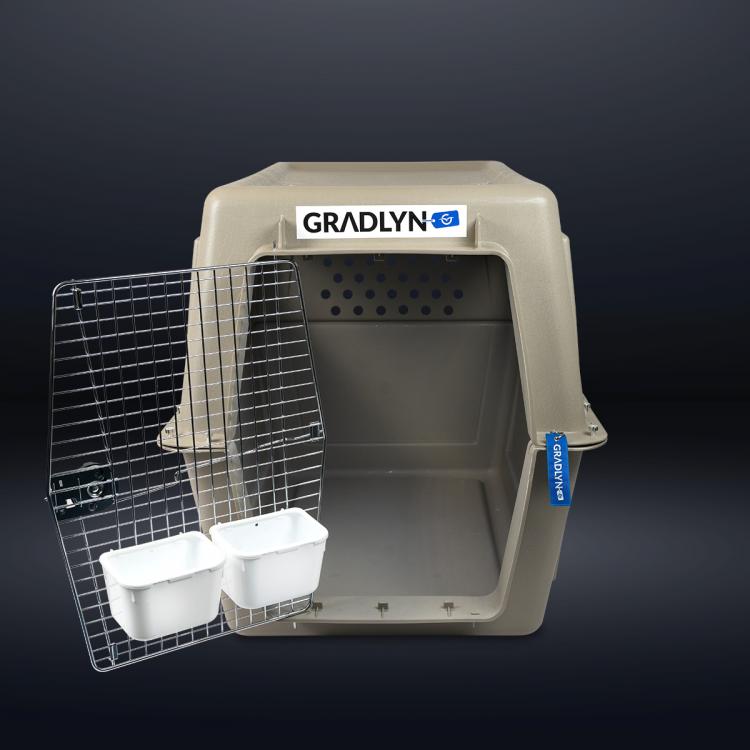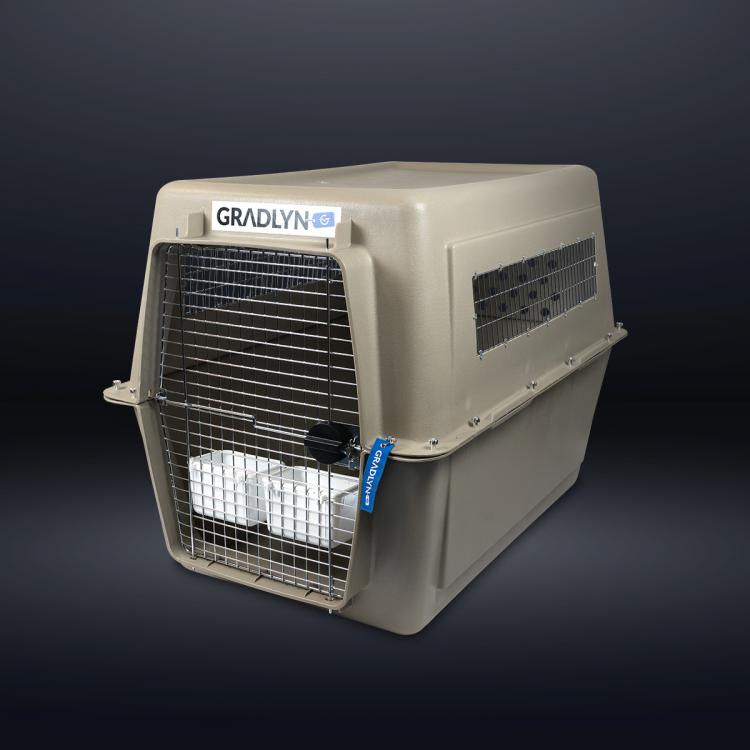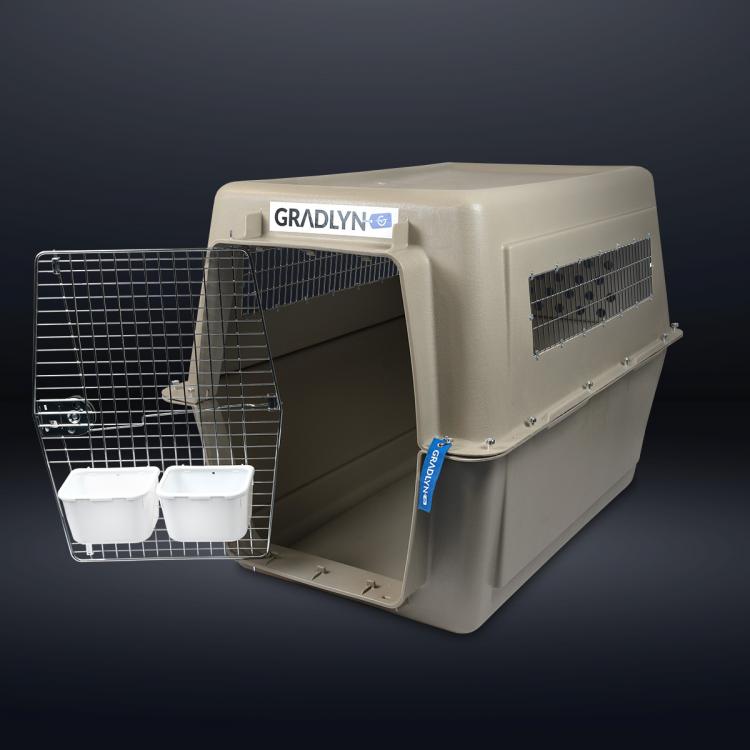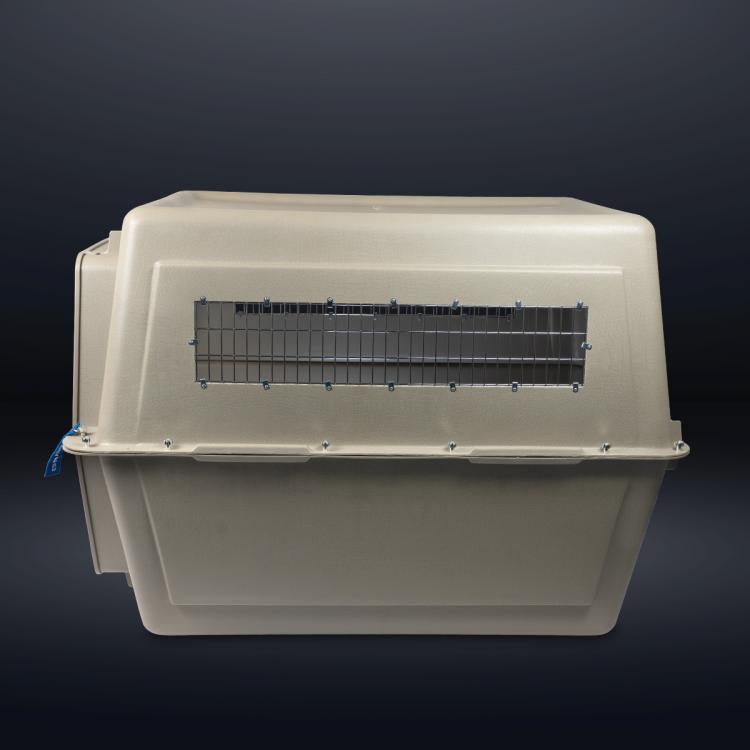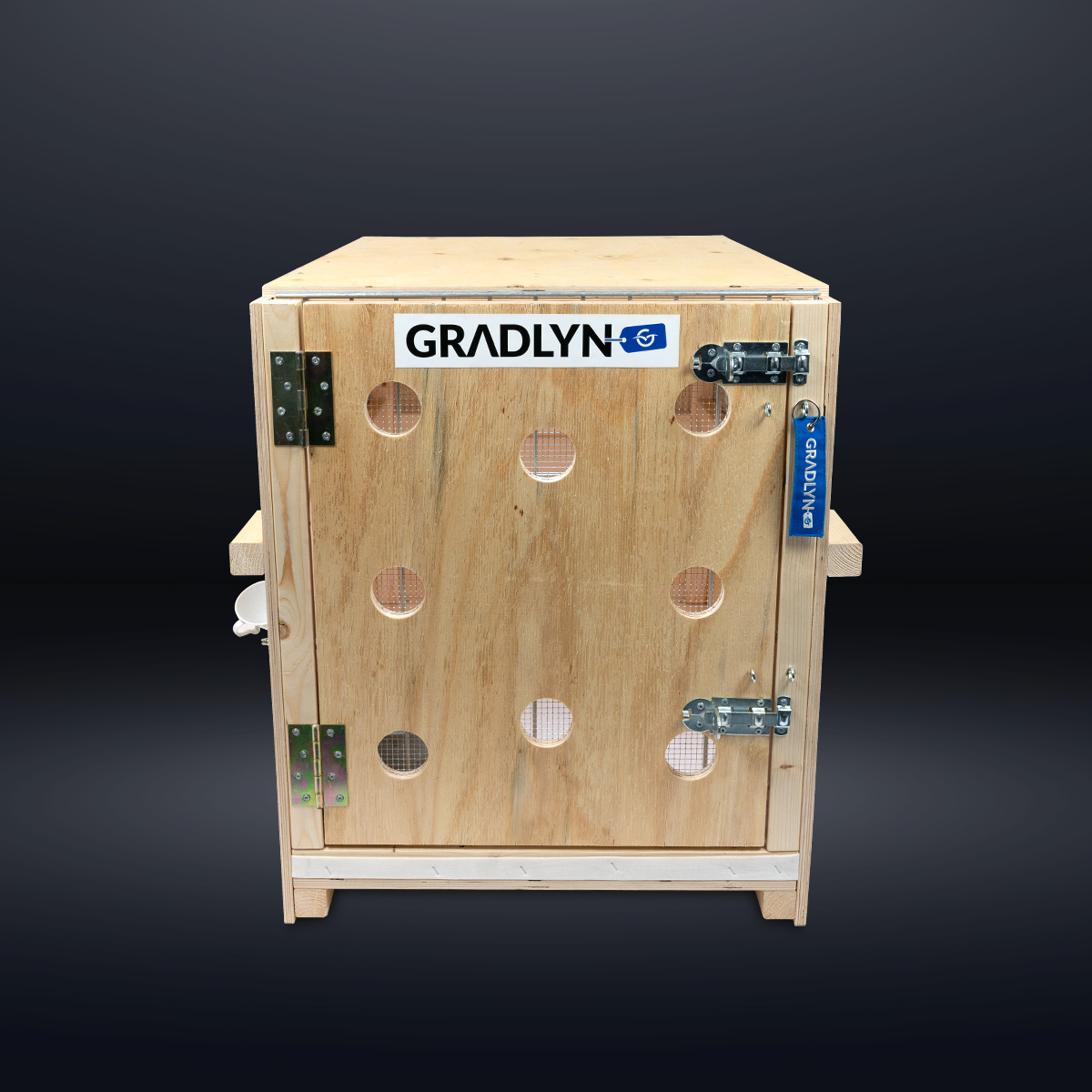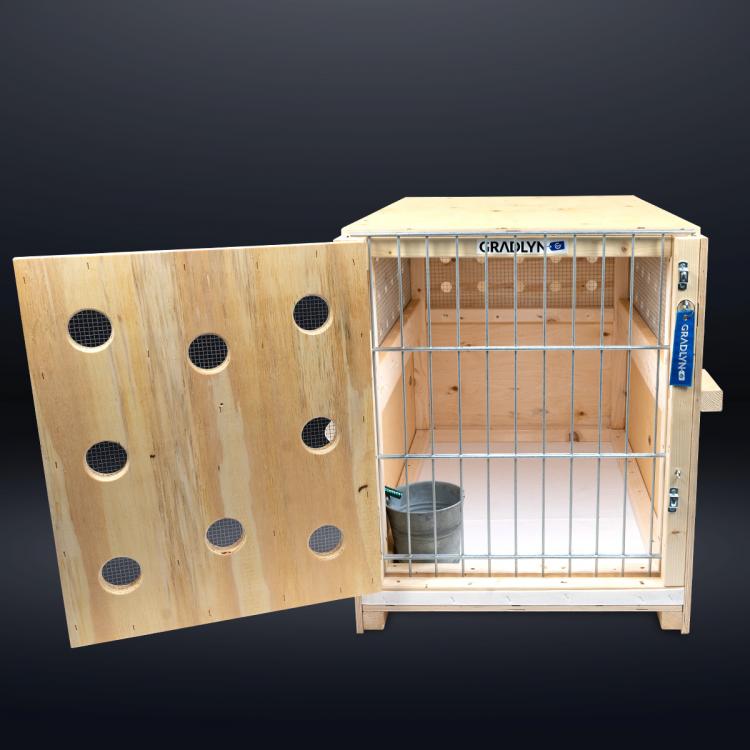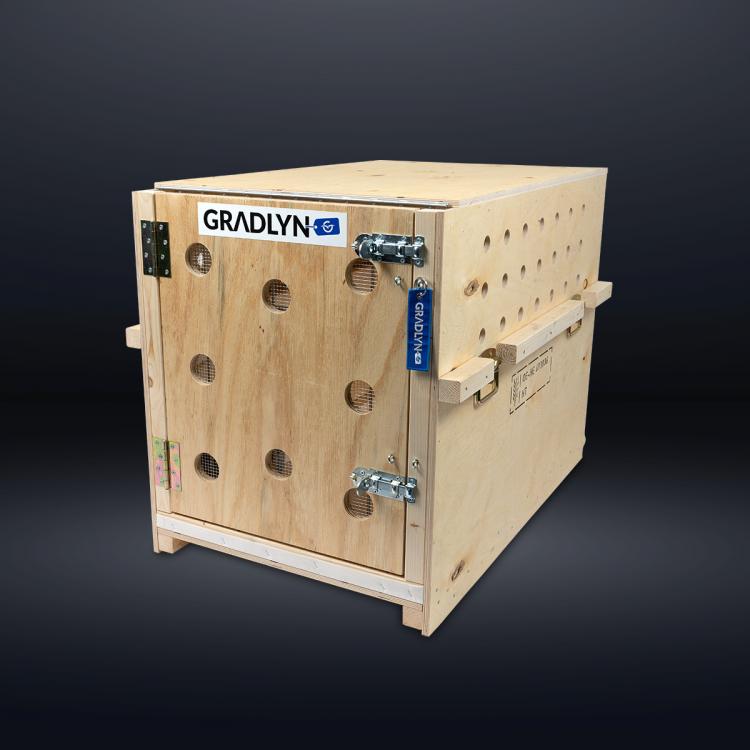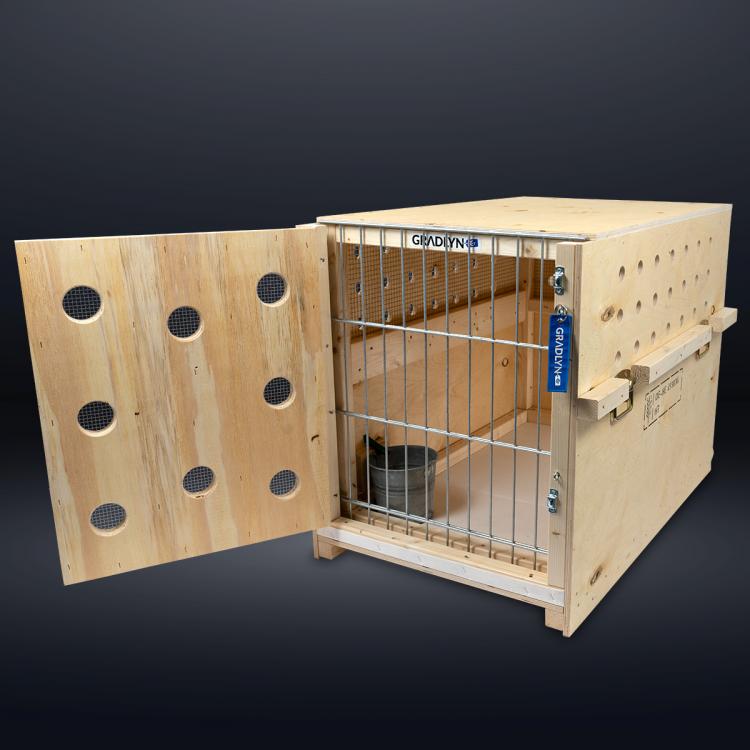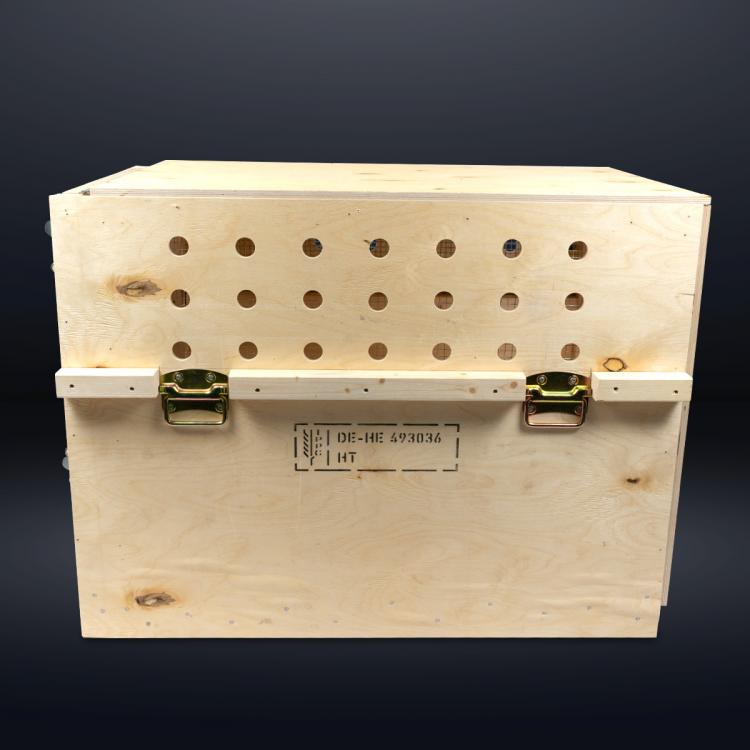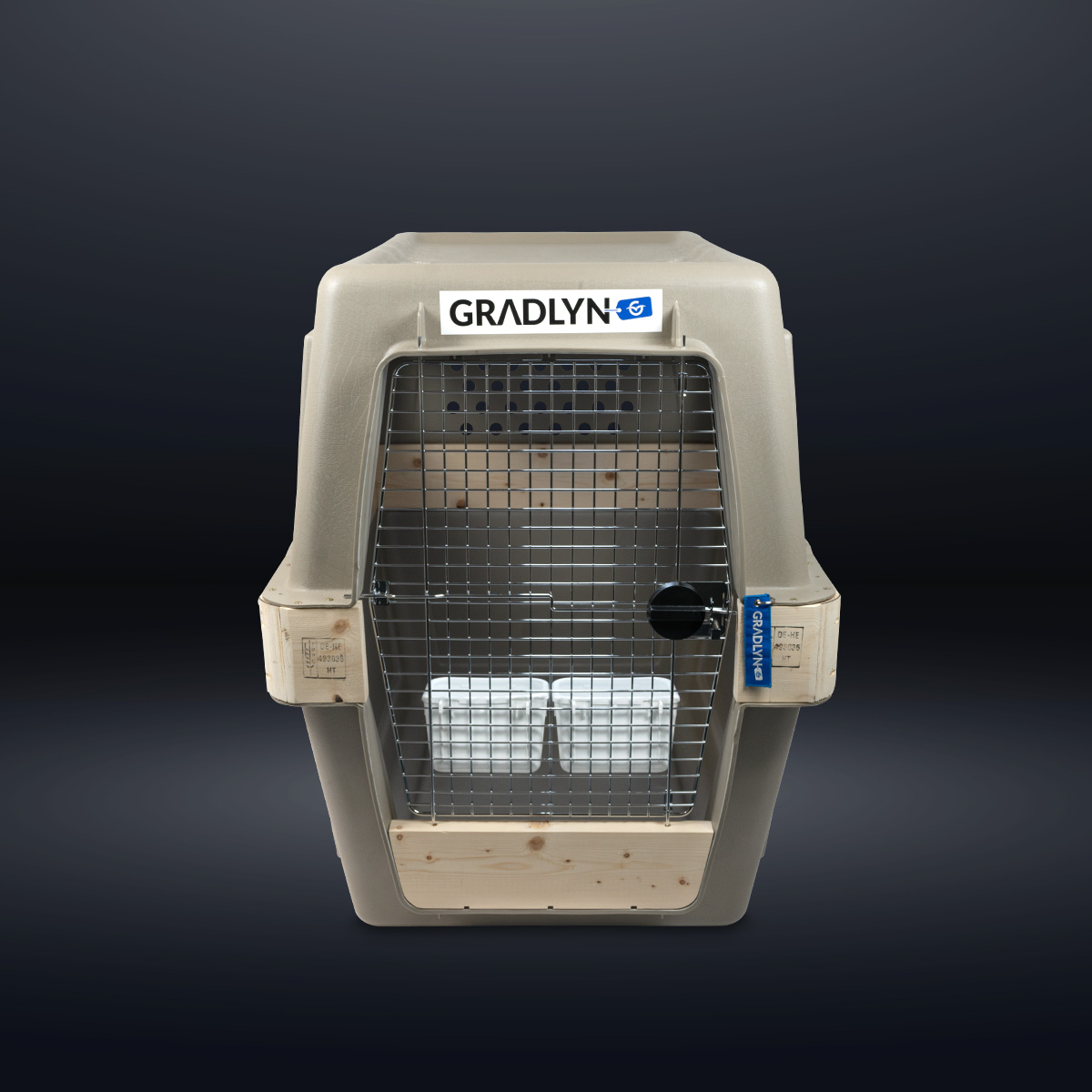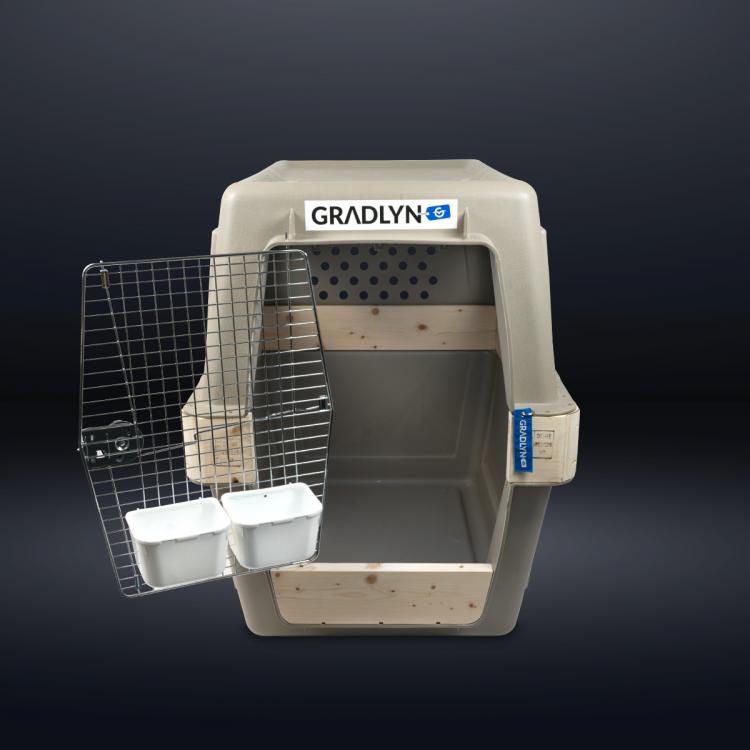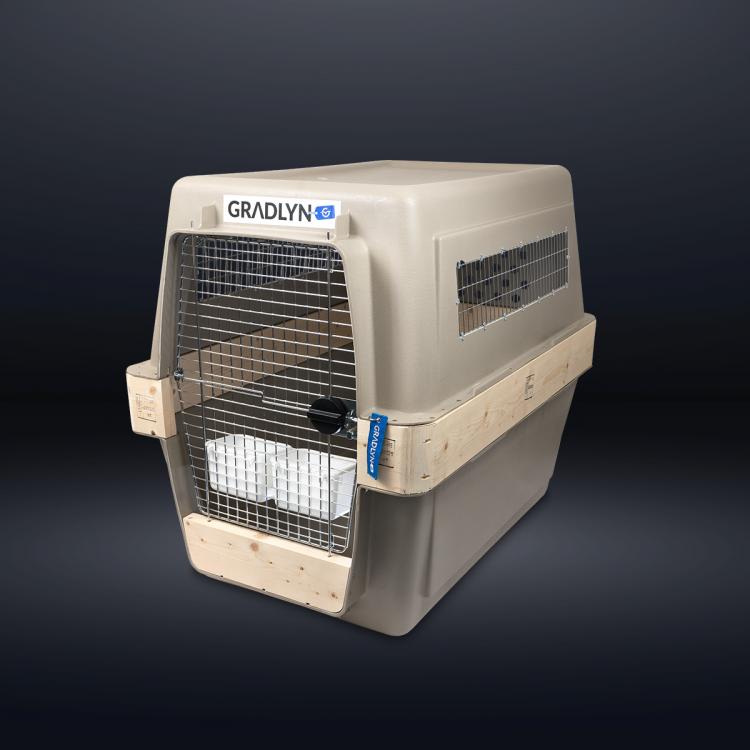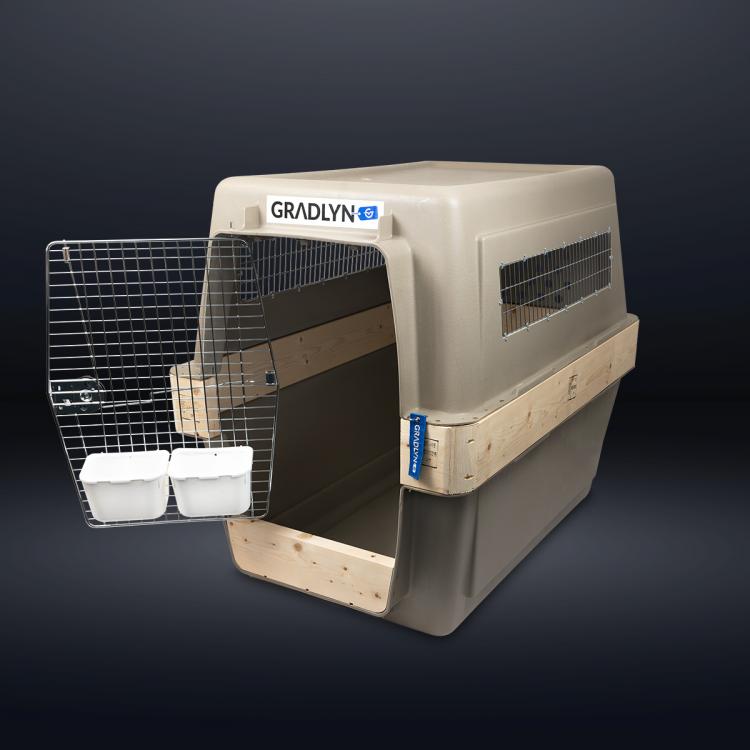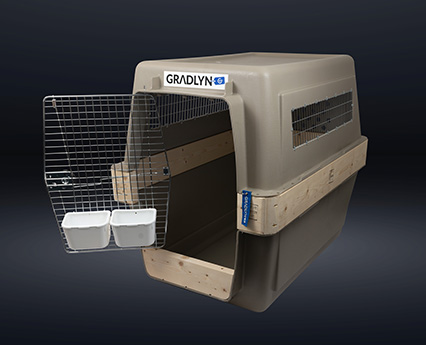How much space does my dog/cat really need?
In principle, the transport box must be tall enough for your pet to stand up – as if has "just heard a noise in the garden and is stretching its head inquisitively," explains Kay Wissenbach. "It’s unrealistic to expect an animal in transit to spend the whole time lying down. And that must be taken into account."
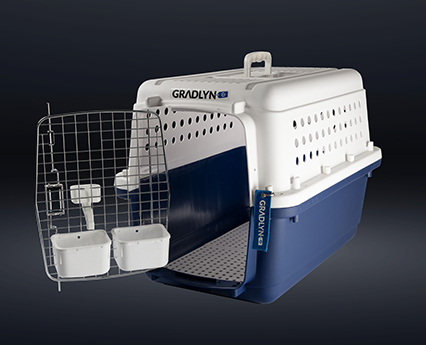
The IATA, the umbrella organization for airlines, has created a set of regulations about international transport boxes for each animal in transit, which runs to more than four hundred pages. These rules must be followed by every airline. So it is essential to ensure that all transport boxes are IATA-approved. "We regard these as minimum standards," says Wissenbach, commenting on a responsible approach to animal transport. "Experience has shown that over the years, many small improvements we have been able to make have resulted in a safer and more comfortable flight for our animals."
Thus, for instance, transport boxes should have a smooth floor and a smooth lid or ceiling. And box corners in particular often harbour defects such as splinters and sharp edges. Wissenbach observes that: "These can cause serious injury to animals." It is also recommended to use unbreakable box systems constructed from shatterproof plastic. An animal box should have no openings on the floor or in the lid or ceiling area, but the sides must have enough window slots to provide good airflow and vision. These should consist of smooth grilles and not incorporate any milled metal with sharp-edges – as some manufacturers still do.
Another feature of a safe box is its door and locking mechanism. The door must not open inwards, and the locking bolts must be recessed at least one-and-a-half centimetres into the housing. Unfortunately, there are always boxes where weak hinges are left to support shaky doors – it’s unrealistic to describe such arrangements as a proper locking system. Some cages also have plastic doors, but this is just as unacceptable as rusted doors or chewed cages. The cage bottom and cover must be screwed together and not, as often happens, fixed together with clips or staples. And unfortunately, cable ties are sometimes used as another alternative. For safety reasons, boxes fitted with castors are prohibited, as well as folding cages which could collapse and cause serious injuries to the animal.
For vets, a transport container is the initial visual evidence which gives an impression of the kind of animal husbandry which is in place. So if an animal travels in an old cage which shows signs of neglect, that animal is checked even more rigorously than usual.
Some further examples of misplaced affection for cherished pets can often occur before a flight: For instance, the transport box is designed to take just a thin towel, so a large, "cuddly" blankets just mean the animal is left with little space. Furthermore, pets should not be fed excessively before a flight, because
varying atmospheric air pressure and different rates of ascent can easily overburden an animal’s stomach.
It is also necessary to remove any bottles which may develop leaks because of pressure changes. It’s always better to use two smooth, round bowls firmly screwed to the door to hold food and drink.
- A professional tip: Fill the water bowl with water and then freeze, so the contents thaw gradually. This will help to prevent leaks during the initial phase of the journey.
It is also important to follow international conventions for the marking of animal transport boxes. According to IATA regulations, each box must have a "Live Animal" sticker and clear markings to show the top and bottom orientation. This is absolutely essential to avoid any errors during transportation. Approved transport boxes are also designed in such a way that they can be easily loaded for travel abroad. But non-standard transport housing, such as boxes with rounded backs or other fanciful designs, risk being left behind. The loading height applicable for any connecting flight should also be checked with the airline beforehand.
Air travel and animal transport are not an everyday experience for most animals, so owners should take the greatest care to see that their animals are really comfortable to keep their stress levels as low as possible, and thus ensure that each animal arrives at the destination in a relaxed state.
Our travel guides will be happy to put you at ease by providing competent and friendly advice on all questions concerning individual animal transport and appropriate transport boxes.


